Airplane is an engine-driven machine that can fly through the sky, supported by the flow of air around its wings. Hundreds of thousands of airplanes are used throughout the world. Millions of people depend on aircraft for swift transportation. People and businesses rely on airplanes for the quick delivery of mail and packages. Many industries ship their products by air. Airplanes have many other uses, from helping fight forest fires to carrying emergency aid. In addition, airplanes are a major weapon of war.
Airplanes provide the world’s fastest practical means of transporting passengers and freight. Most large transport planes routinely fly 500 to 600 miles per hour (mph), or 800 to 970 kilometers per hour (kph). The fastest airplanes are supersonic, which means they can fly faster than sound travels. At sea level, sound has a speed of 760 mph (1,225 kph).
Airplanes range in size from training planes, which have only two seats, to jumbo jets, which can carry hundreds of passengers. In the United States, about 90 percent of all airplanes have one or two engines and carry only a few passengers at a time. Many people use such airplanes for short business or pleasure trips.
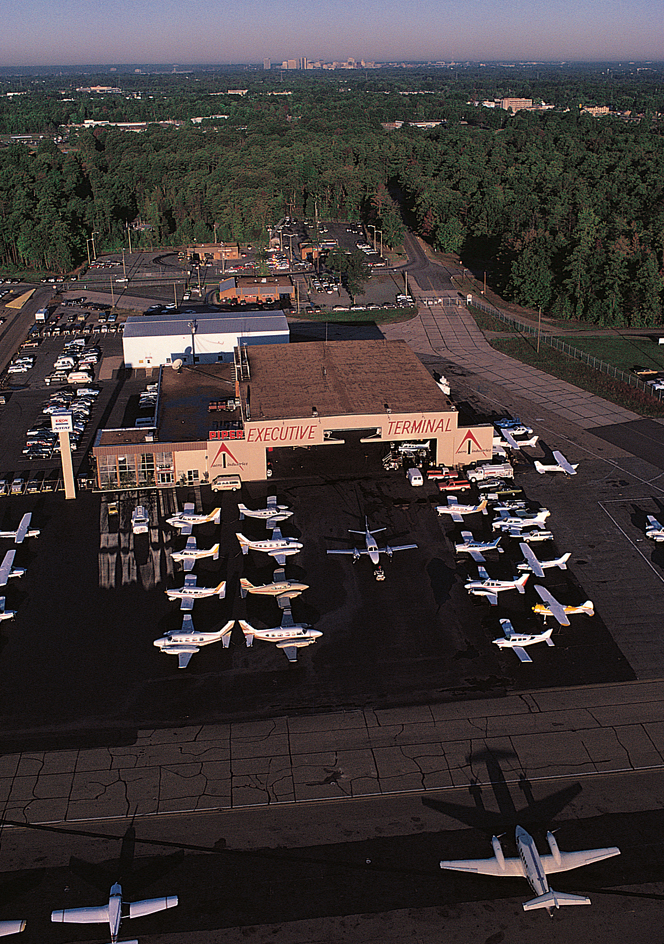
Manufacturers build airplanes according to the principles of aerodynamics. Aerodynamics is the study of the forces that act on an object as it moves through the air. An airplane has wings that are fixed—that is, they do not move. The wings usually extend from either side of the plane’s body. In some cases, the wings are actually part of the body’s shape. The wings are curved on top. As the plane moves forward, the flow of air around the wings creates an upward force called lift.
In addition to wings, a plane has one or more engines and various control surfaces. The engines must move the airplane fast enough to produce the lift needed for flight. The control surfaces are movable sections on the back edge of the wings and tail. The pilot adjusts them to control the plane’s flight path. The activity of designing, building, and flying aircraft is called aeronautics.
An airplane is a heavier-than-air aircraft, meaning it is heavier than the air it displaces. Airplanes achieve flight in a different way than do airships, such as blimps or dirigibles. These lighter-than-air aircraft rise and float because they are filled with a gas that is lighter than the surrounding air.
During the late 1700’s, people made their first flights into the air using balloons. After the first balloon flights, inventors tried to develop a heavier-than-air flying machine. Some inventors experimented with gliders (engineless planes). They studied birds’ wings and discovered that the wings are curved. By building gliders with curved wings instead of flat ones, they could make the vehicles fly hundreds of feet or meters. But heavier-than-air machines could not fly far until the invention of an engine light enough but powerful enough to keep a plane in flight. The first such engines were four-stroke gasoline engines, developed during the 1880’s and initially used to power bicycles, boats, and carriages.
In 1903, the brothers Orville and Wilbur Wright—two American bicycle makers—made the first successful powered airplane flights in history near Kitty Hawk, North Carolina. After the Wright brothers’ success, pilots and inventors worked continually to improve airplane design. By the late 1950’s, passenger planes with jet engines had brought all countries within easy reach of one another.
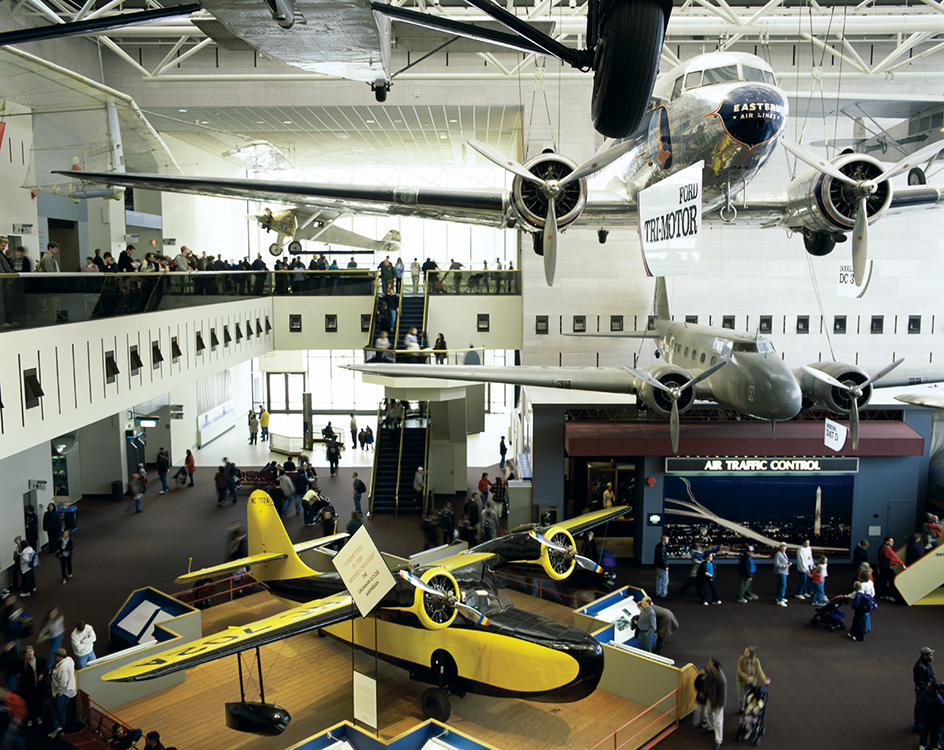
Types of airplanes
There are many kinds of airplanes, and they vary greatly in size, speed, and function. Today’s airplanes can be divided into five main groups: (1) commercial transport planes, (2) general aviation planes, (3) military planes, (4) seaplanes, and (5) special-purpose planes.
Commercial transport planes
are large planes owned by airline companies. Most of these planes are airliners—planes that are designed to carry passengers and some cargo. Some commercial transports are designed to carry cargo only. The largest transport planes commonly used weigh about 400 short tons (360 metric tons) when fully loaded.
Most large airliners can carry from 100 to 250 passengers. However, some can carry more. For example, the Airbus A380 has room for over 550 passengers and carries more than 51,400 gallons (194,000 liters) of fuel. A typical interior layout includes 18 washrooms and multiple galleys.

Most airliners routinely fly 500 to 600 mph (800 to 970 kph). Supersonic transport planes have traveled at 1,350 mph (2,180 kph).
Most airliners are powered by jet engines, which enable the planes to travel long distances at high speeds without refueling. Most four-engine jets, such as the Boeing 747 or the Airbus A340, can fly at 600 mph (970 kph) nonstop for 6,000 miles (9,700 kilometers) or more—farther than the distance between New York City and Tokyo. Four- engine jet transports fly at an altitude of 30,000 to 45,000 feet (9,100 to 13,700 meters), and so they stay above most storms.
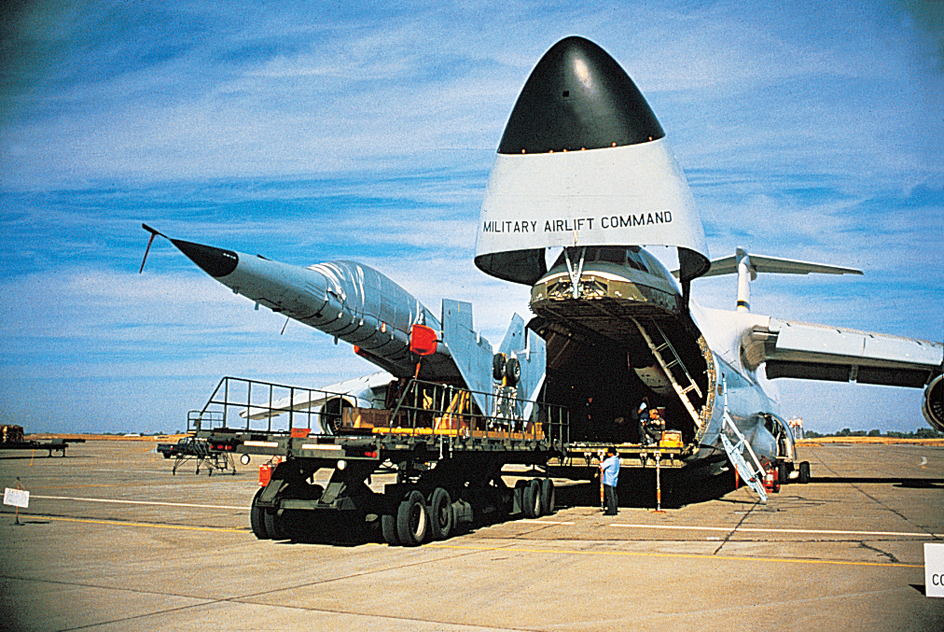
Many three-engine jets are designed for shorter flights than are four-engine jets. Three-engine jets can also use shorter runways. Some three-engine jetliners, such as the McDonnell Douglas DC-10, can carry as many passengers as most four-engine jets can carry.
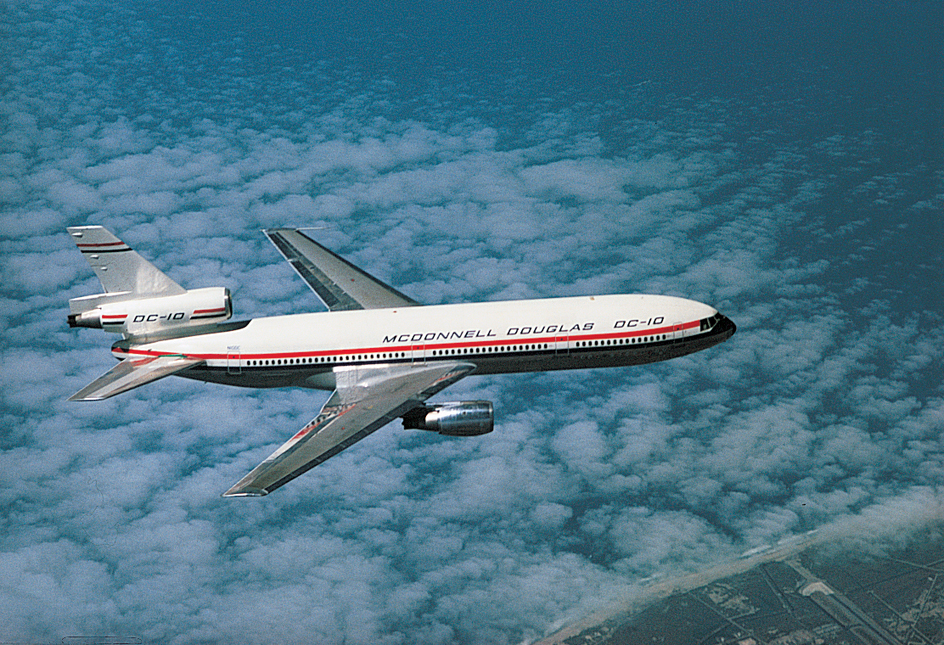
Many twin-engine jetliners carry fewer passengers than three- or four-engine jets and are used for shorter trips to serve small and medium-sized cities. Other twin-engine jets fly long trips. The Boeing 777, for example, can carry more than 300 passengers over 7,200 miles (11,600 kilometers). Twin-engine, propeller-driven planes, such as the Beechcraft King Air, travel at less than 400 mph (640 kph) and make mostly short flights.

General aviation planes
are smaller than most commercial transports and can thus land and take off at smaller airfields. Most of these planes are light planes, which generally weigh less than 2,000 pounds (900 kilograms) when empty and have two to six seats.
Most light planes are single-engine, propeller-driven planes owned by individuals. Many people fly such planes for personal transportation and enjoyment. Light planes have hundreds of other uses. For example, they are used to inspect pipelines and power lines, to spot and fight forest fires, and to deliver emergency aid. Some light planes are used to haul light cargo, to take pictures from the air, and to teach student pilots to fly. Farmers use light planes to help them plant seeds, check soil erosion, and count livestock.

The largest general aviation planes have two engines. Air taxi services and commuter airlines use such planes to transport passengers—usually fewer than 20—between small airports and the large airports that serve larger airliners.
Many businesses own single- or twin-engine airplanes. Such business planes, also called corporate planes, are used to fly employees to out-of-town assignments or meetings.
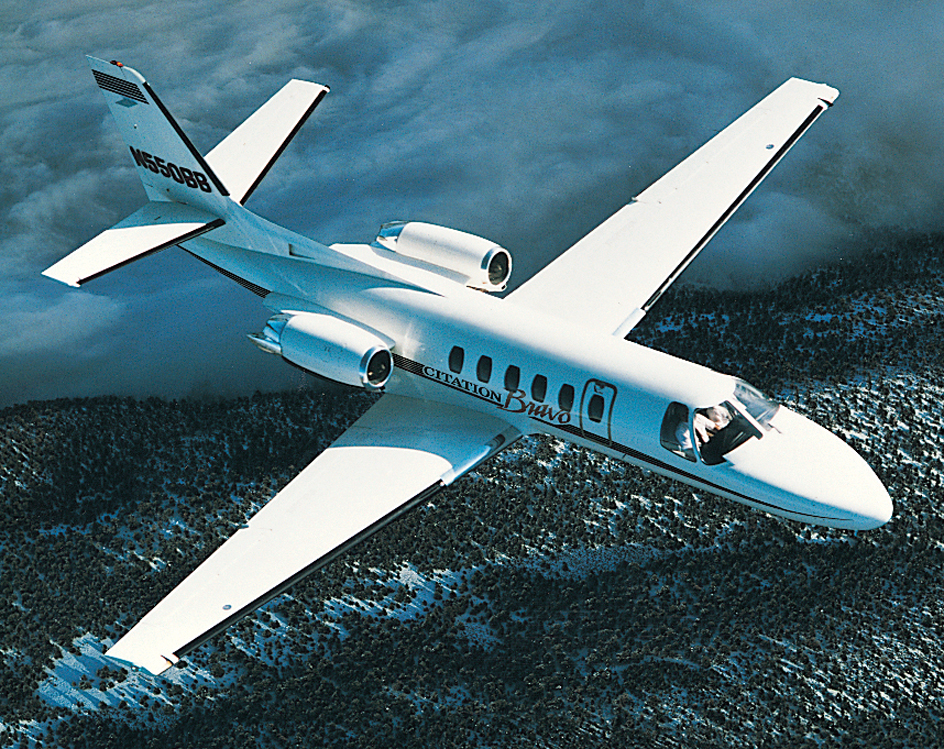
Extremely light aircraft are flown for recreation. In the United States, where they are called ultralights, these one-seat, single-engine aircraft weigh no more than 254 pounds (115 kilograms) and carry only 5 gallons (19 liters) of fuel or less. Ultralights are allowed to fly only below 10,000 feet (3,000 meters) and at a speed of 63 mph (101 kph) or less. In other countries, these light aircraft are commonly called microlights and usually have two seats. They may weigh up to 496 pounds (225 kilograms) and carry up to 15 gallons (57 liters) of fuel. They are allowed to fly only below 10,000 feet and at a speed of 40 mph (65 kph) or less.

Military planes
carry out a variety of duties for a nation’s armed forces. Some military planes are special models of transports or light planes that the armed forces have bought from aircraft manufacturers. For example, the United States armed forces use special models of the Boeing 707 as tankers for refueling other planes in the air. Many other kinds of military planes are custom-made. Most are bombers, which mainly attack ground targets, or fighters, which mainly attack other aircraft. Fighter-bombers can both fight and drop bombs. One of the most advanced fighter-bombers is the Lockheed F-117A “stealth” fighter, a sleek plane designed to be nearly invisible to radar.
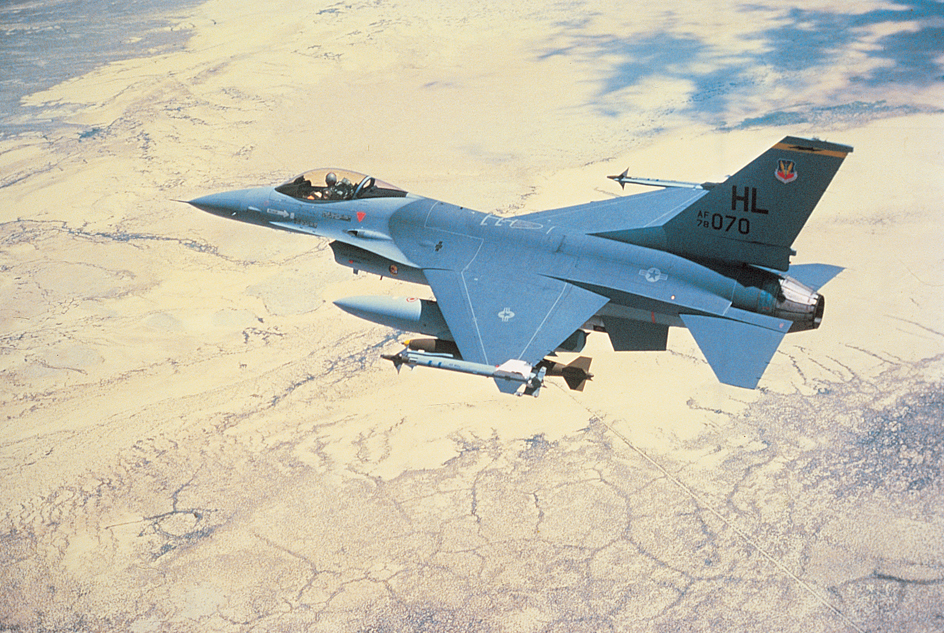
Some military planes are designed for tasks other than attacks on an enemy. For example, the Lockheed C-5A Galaxy is an enormous transport plane that can carry two battle tanks weighing 50 short tons (45 metric tons), or about 350 troops. Another Lockheed plane, the SR-71A, was one of the most advanced spy planes ever built. It carried cameras and instruments used to survey enemy forces and installations in the late 1900’s. Today, survey tasks are often accomplished by pilotless aircraft called drones. For more information on military planes, see Aircraft, Military; Air Force, United States (Planes and weapons of the Air Force); Unmanned aerial vehicle (UAV).
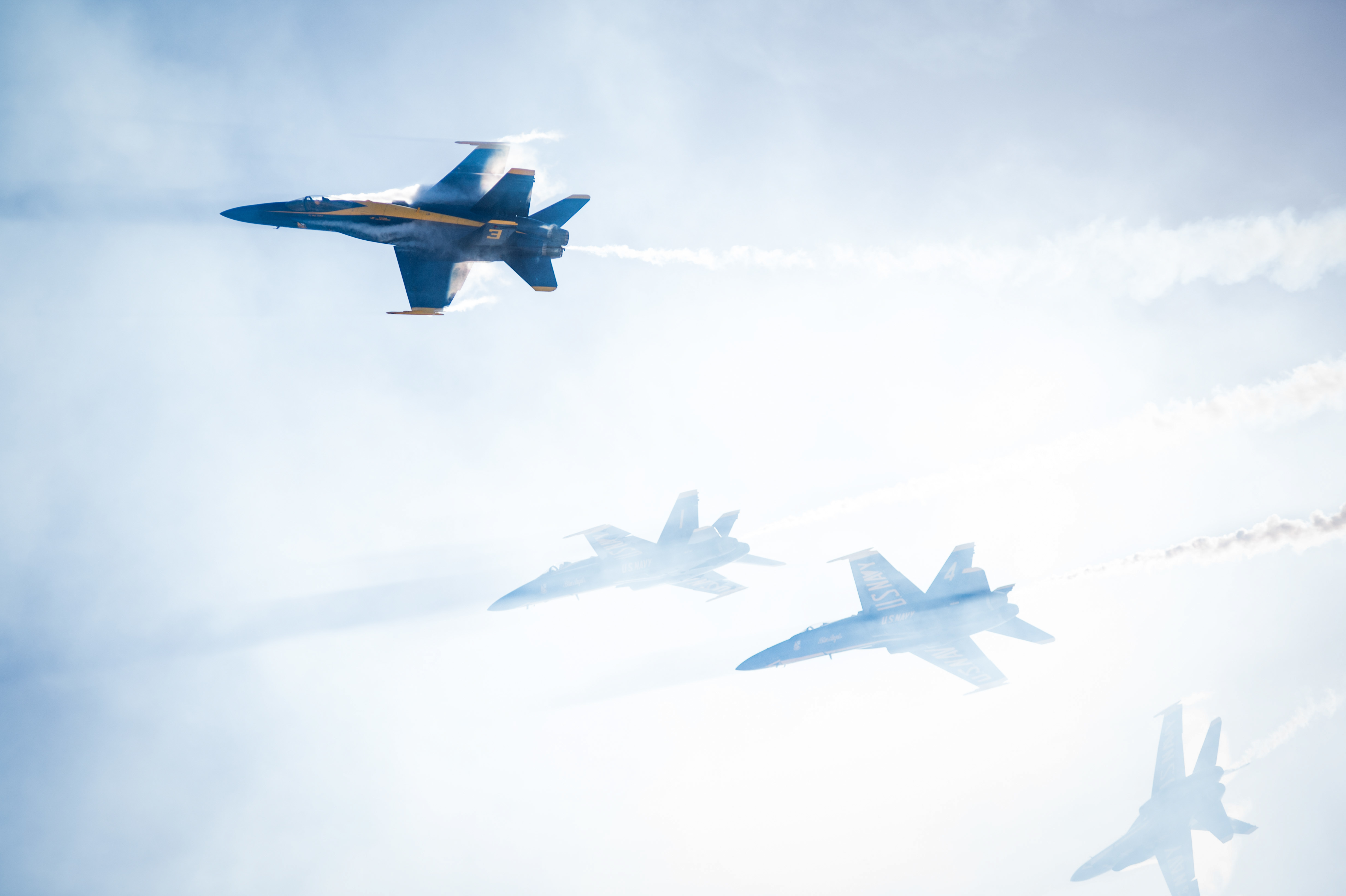
Seaplanes
can touch down and take off on water. There are three kinds of seaplanes: (1) floatplanes, (2) flying boats, and (3) amphibians. Floatplanes are equipped with big floats instead of wheels. Flying boats have a watertight body that floats in the water like the hull of a ship. Amphibians, which can land and take off on both land and water, are flying boats with retractable wheels attached to their floats or hull. The pilot raises the wheels when operating the plane on water and lowers the wheels on land.
Special-purpose planes.
Many airplanes are built for particular jobs. For example, farmers use agricultural spray planes to spray their fields with liquid fertilizer or insecticide. These planes are built to fly slowly and to carry large tanks filled with chemicals. An amphibian plane made in Canada is designed for fighting forest fires. This plane can fly just above a lake and draw more than 1,000 gallons (3,800 liters) of water into its tanks. The plane then flies to the fire and drops its load of water.

Special-purpose planes also include planes used for air races or for aerobatics (air acrobatics). These are light planes that can perform difficult maneuvers. Another large category of special-purpose planes consists of home-built airplanes, which are built from plans or manufactured in kits for assembly by the owner.
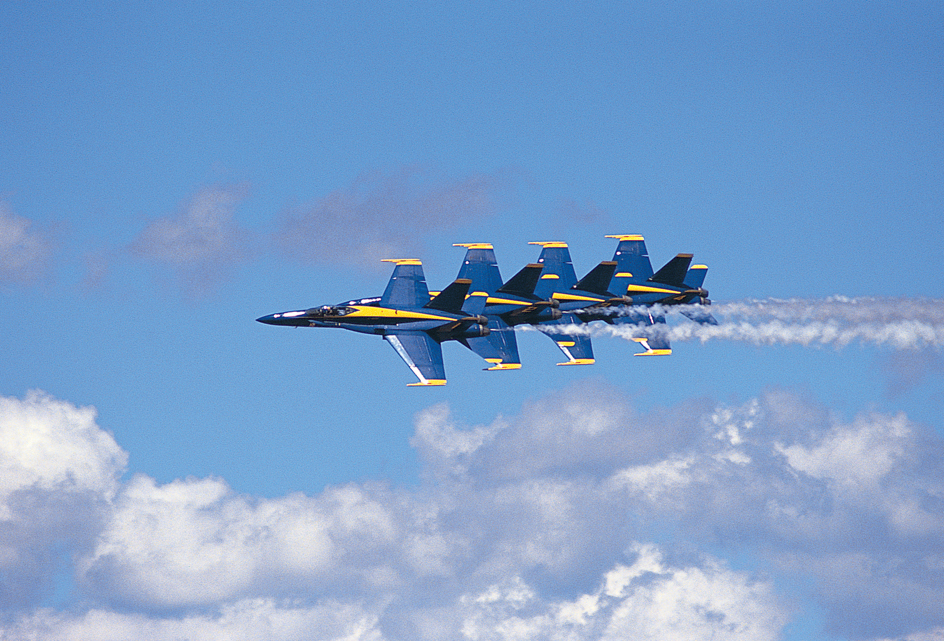
Aircraft called V/STOL‘s are designed to take off and land vertically or on a short runway. The term V/STOL stands for Vertical/Short Take-Off and Landing. V/STOL’s have great military value because they can land on small airfields near battlefields and on ships smaller than aircraft carriers. See V/STOL.
The parts of an airplane
All airplanes, except for a few experimental planes, have the same basic parts. They are (1) the wing, (2) the fuselage << FYOO zuh lahzh >> —that is, the body of the plane, (3) the tail, (4) the landing gear, and (5) the engine. All these parts—except the engine—make up a plane’s airframe.
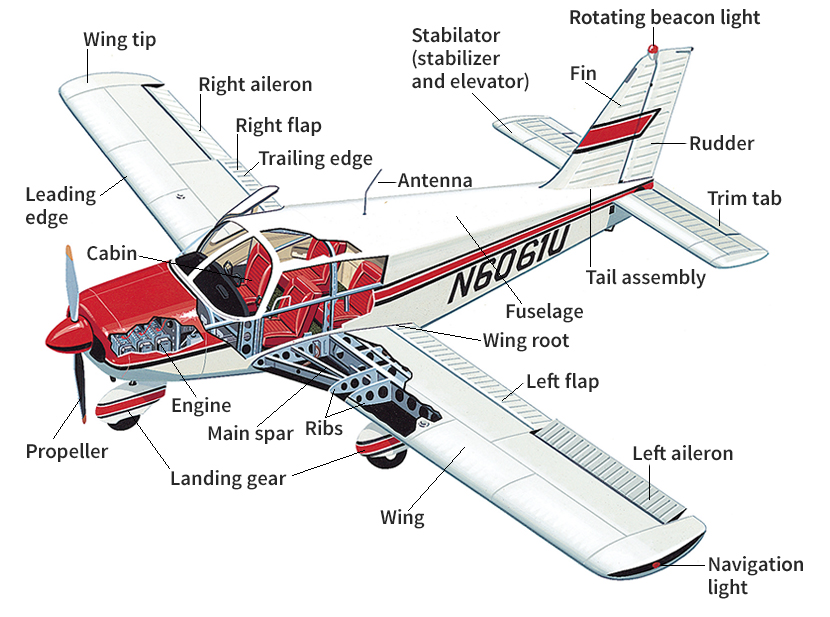
This section of the article discusses the basic parts of the airframe, as well as airplane controls and instruments and types of propellers. The airplane engine is described in the next section. For information about how the parts of an airplane work to move the plane through the air and how a pilot uses airplane controls and instruments, see the section called Principles of flight.
The wing.
People usually think of an airplane as having two wings, but modern planes actually have only one. This wing is a single, continuous structure that extends outward from each side of the fuselage. A wing has a nearly flat bottom and a curved top. This shape helps create the lift that raises an airplane off the ground and keeps it in the air.
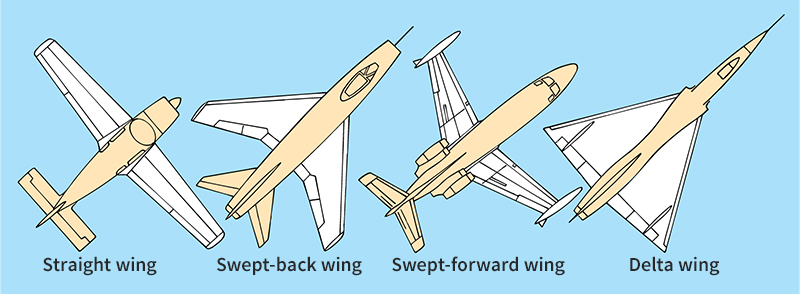
Most airplane wings are metal. They have a skeleton of lengthwise spars and crosswise ribs. The skeleton has a thin covering, usually of an aluminum alloy (mixture of metals). Most planes have a cantilever wing, which is completely supported by its internal structure.
An airplane wing has a root, tip, leading edge, and trailing edge. The root is the part of the wing attached to the fuselage. The tip is the edge of the wing farthest from the fuselage. The leading edge is the curved front edge of the wing. The top of the wing thickens from the leading edge and then slopes back to the knifelike trailing edge. On most airplanes, the wing tips are slightly higher than the wing roots. Such wings are called dihedral wings. Many planes have a low-wing design—that is, the wing is joined to the lower part of the fuselage. In planes of mid-wing design, the wing is attached about halfway up the side of the fuselage. High-wing planes have the wing near the top.
In planes of straight-wing design, the wing’s leading edge and the fuselage form a right angle. This design is common because it works over a broad range of speeds. Many high-speed airplanes, especially jets, have a sweptwing. Such a wing, also called a swept-back wing, slants backward from the root to the tip. A few planes have a wing that is swept forward. A delta wing is shaped like a triangle. The root may be almost as long as the fuselage, and the leading edge is deeply swept-back for high-speed flight.
Most airplane wings have movable control surfaces that help balance the plane during flight. Ailerons are hinged sections along the trailing edge of the wing. They can be moved up or down to control the plane’s lateral stability (balance from side to side). The ailerons are used to make the plane bank (tilt) to the right or to the left for a turn. When one aileron is raised, the other is lowered. On most planes, each aileron has a small hinged section called a trim tab. A pilot uses the trim tabs to regulate the pressure that must be applied to other controls in keeping the plane in trim (balance) during flight. There are usually trim tabs on the movable parts of the tail as well as on the ailerons. Loading the player...
U.S. military's V-22 Osprey aircraft
Many airplanes have flaps. Flaps are hinged sections along the trailing edge of the wing near the root. They are lowered to help increase the plane’s lift during both take-off and landing.
Some planes have additional wing controls. A spoiler is a plate on the upper part of each side of the wing. A pilot can raise both spoilers to act as air brakes. If the pilot raises the spoiler on one side only, it makes the plane bank in that direction. Some airplanes have spoilers instead of ailerons. A slat is a hinged section on the leading edge of the wing. At low speeds, the slats automatically slant forward and help the wing provide extra lift. A slot is an opening behind the leading edge near each wing tip. Slots also help produce more lift at low speeds.
Many airplanes have their engines on or in the wing. The engines are enclosed in metal casings called nacelles << nuh SEHLZ >> . Most wings also have space inside for fuel tanks and landing gear. Various lights are also located on the plane’s wing. For example, each wing tip has a colored navigation light, also called a position light. The light on the plane’s left wing tip is red, and the light on the right wing tip is green. By noting the position of these two lights, a person can tell the direction in which a plane is traveling.
The fuselage
of an airplane extends from the nose to the tail. Most airplane bodies have a tubelike shape and are covered with a lightweight aluminum skin. The name fuselage comes from the French word fusele, which means spindle-shaped. The engine of most single-engine planes is in the front part of the fuselage. However, some multiengine jet planes have their engines at the rear of the fuselage.
The fuselage houses the controls, crew, passengers, and cargo. In the smallest airplanes, the fuselage contains a cockpit with room for only the pilot, or for the pilot and one passenger. In most planes that carry from two to six people, the pilot and passengers sit together in a single cabin. Most large planes have a cockpit for the crew and a cabin for the passengers and cargo. In major passenger airliners, such as the Airbus A340 and the Boeing 787, the cabin has separate decks (floors) for the passengers and cargo.
The tail,
also called the empennage << ehm PEHN ahj >> , is the rear part of an airplane. It helps guide the plane and keep it balanced in flight, much as feathers do on an arrow. Most tails consist of a vertical fin and rudder and a horizontal stabilizer and elevator. The fin stands upright and does not move. It keeps the rear of the plane from swinging to the left or right. The rudder is hinged to the rear edge of the fin and can be moved from side to side. It helps control the plane during a turn.
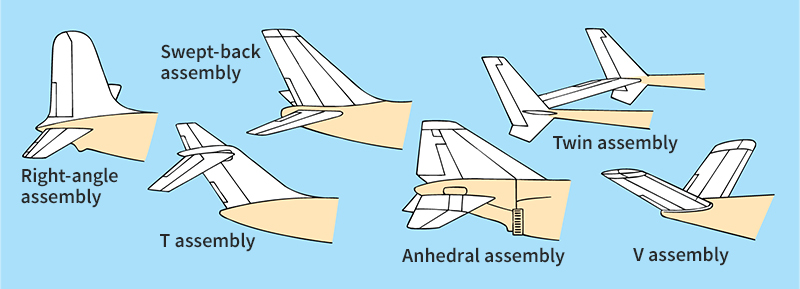
The stabilizer is like a small wing in the tail. It prevents the tail from bobbing up and down and so keeps the plane flying at a steady altitude. The elevator is hinged to the rear edge of the stabilizer. A pilot moves the elevator up or down to raise or lower the plane’s nose.
Some modern airplanes have a stabilator instead of a stabilizer and an elevator. A stabilator is a single solid unit that moves up or down. Almost all planes have a trim tab on the elevator or stabilator, and some have a trim tab on the rudder.
Tails have various shapes and arrangements. On some planes, the fin and rudder stand upright at a right angle to the fuselage. On other planes, they slant back at a sharp angle. Most jet planes with engines at the rear of the fuselage have their horizontal stabilizer and elevator mounted across or near the top of a tall vertical fin and rudder. Some light airplanes have a V-tail. This type of tail consists of two fins in a V-shape with an elevator and a trim tab attached to each fin.
The landing gear,
also called the undercarriage, consists of the wheels, floats, or skis upon which an airplane moves on the ground or water. The landing gear also supports the plane’s weight on the ground or water.
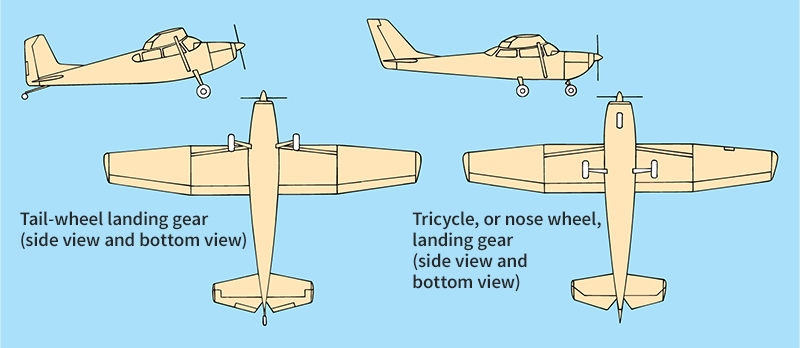
Landplanes have two main types of landing gear. In some light planes, landing gear consists of a wheel under each side of the wing or front part of the fuselage and a third wheel under the tail. Most airplanes, however, have a tricycle landing gear. On light planes, it consists of a wheel under the nose and two wheels under the midfuselage or one under each side of the wing. Many large airplanes have a tricycle landing gear made up of (1) a main gear with from 1 to 10 wheels under each side of the wing or from 2 to 20 wheels under the midfuselage and (2) a nose gear with 2 or 4 wheels.
Landing gear may be fixed or retractable. Fixed landing gear remains extended in flight. The extended gear increases air resistance and thus slows down the plane. Retractable landing gear can be retracted (drawn back) into either the wing or the fuselage after take-off. Most high-speed planes use retractable landing gear.
The watertight body of a flying boat serves as both landing gear and cabin. Floats are the landing gear for floatplanes. Amphibians, which operate from land or water, have retractable wheels in their floats or hull. Some planes are equipped with skis for landing in snow.
The controls and instruments.
Inside the cockpit, the pilot has a variety of controls, instruments, and navigation aids. Most planes have a yoke (control wheel) that operates the ailerons and elevator. A few special types of planes, such as fighters and spray planes, have a control stick instead of a yoke. Two rudder pedals on the floor control the rudder. Various engine instruments display information on the fuel supply, oil pressure, and other conditions affecting the engine. Flight instruments show the plane’s speed, altitude, and attitude (position in relation to the horizon).

Some airplanes have an automatic flight control system , sometimes called an automatic pilot or autopilot. This device is connected to the airplane’s controls and automatically keeps the plane on course.
Many airplanes have one or more flight recorders, sometimes called black boxes. These devices record flight data, such as speed and direction, or they record conversations and other sounds in the cockpit. In case of a crash or other incident, the flight recorders help investigators determine how the incident happened.
Propellers,
also called airscrews, move turboprop planes and planes with reciprocating engines through the air. On most such planes, each propeller has its own engine. However, a few planes have coaxial propellers—two propellers turned by a single engine. On most single-engine planes, the engine and a single propeller are mounted at the front of the fuselage. Most propeller-driven planes with more than one engine have their engines and propellers on the wing.
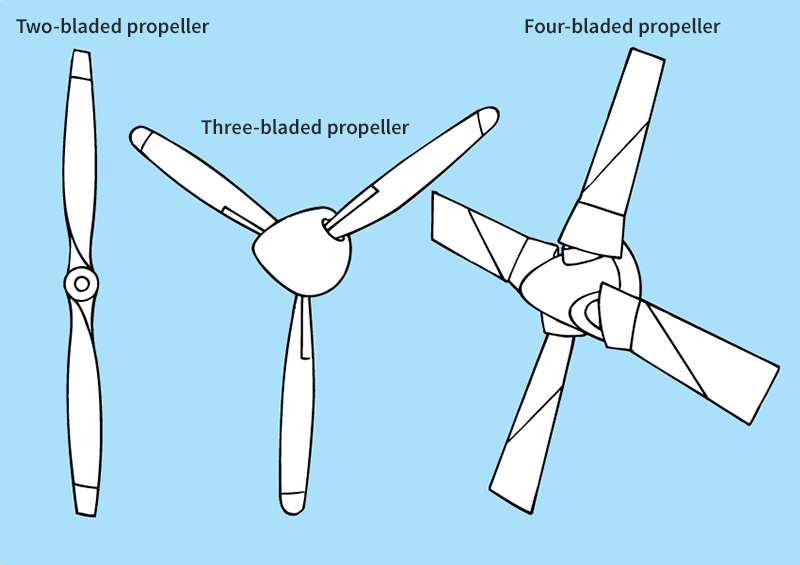
Small planes have a two- or three-bladed propeller. Some planes have propellers with up to eight blades. Many planes have controllable-pitch propellers. A pilot can change the angle of the blades on these propellers in flight. A particular blade angle is best suited to a particular speed or maneuver. With the blades at the proper angle, the plane operates most efficiently. On fixed-pitch propellers, the angle of the blades cannot be changed. Constant-speed propellers adjust their blade angle automatically and so keep the plane’s engine speed steady during any maneuver.

The blades of feathering propellers can be turned to a right angle so that their edges are parallel to the plane’s flight path. If a plane’s engine is disabled, a pilot angles a feathering propeller to decrease air resistance. This action also keeps the wind from spinning the propeller and so prevents possible damage to the engine.

Power for flight
An airplane’s engine produces the power that moves the plane fast enough to fly. Planes use four main types of engines: (1) reciprocating engines, (2) jet engines, (3) turboprop engines, and (4) rocket engines. Reciprocating engines are the heaviest and least powerful of these engines, and rocket engines are the most powerful. Most small airplanes and many large ones have reciprocating engines. Nearly all newer airliners and some private planes have jet engines.Turboprop aircraft have the power of jet aircraft but can operate at lower speeds. Rocket engines are used mainly for research.
Reciprocating engines,
also called piston engines, are the most widely used type of airplane engine. Airplanes that use reciprocating engines also have one or more propellers. The engine turns the propeller, which moves the plane through the air.
Loading the player...Airplane (Single-propeller): Take off
A reciprocating engine in an airplane works much like one in an automobile. Both burn a mixture of gasoline and air inside cylinders. The burning fuel-air mixture forms a fine spray, which explodes. The explosion drives pistons inside the cylinders up and down. This pumping motion rotates a crankshaft. In an airplane, the rotating crankshaft turns the propeller.
Reciprocating engines in airplanes differ from those in automobiles in some ways. In most airplane engines, for example, the cylinders are arranged in a circle or opposite each other. In automobile engines, they are arranged in a single line or a V-shape. In addition, most airplane engines are cooled by air, but most automobile cooling systems use a mixture of water and antifreeze.
Loading the player...Airplane overhead
The power of reciprocating engines is measured in units of horsepower or kilowatts. Most reciprocating engines made for airplanes range from 65 horsepower (50 kilowatts) for small single-engine planes to about 400 horsepower (300 kilowatts) for larger two-engine planes. The most powerful reciprocating engines ever used on an airplane were the 3,650-horsepower (2,722-kilowatt) engines of the huge B-36 bomber of the late 1940’s. Large, high-speed airplanes no longer use such powerful reciprocating engines. These airplanes are powered by jet engines, which weigh less than reciprocating engines but produce much greater power. Reciprocating engines are still used for most light airplanes because they work better than jet engines at low speeds.
Jet engines
enable large airplanes to travel long distances at high speeds. Airplanes use two main types of jet engines: (1) turbojets and (2) turbofans or fanjets.
Loading the player...Airplane (Jet): Take off
The turbojet was the first successful jet engine and is still used on some airplanes. Like other jet engines, the turbojet takes air in through the front and burns it with fuel. This process forms a powerful jet exhaust. The exhaust moves backward through the engine at tremendous speed, which causes the engine to move forward at an equally high speed. Before the jet exhaust passes out the engine’s tail pipe, it spins a device called a turbine, which consists of a set of blades attached to a shaft. The turbine runs the various parts of the engine. See Jet propulsion (How jet propulsion works).
Almost all new airliners have turbofan engines, which are an improvement on the turbojet. A turbofan works much like a turbojet, but it has a fan at the front that draws in huge amounts of air. Only part of the air is burned with the fuel to form the jet exhaust. The rest is added to the exhaust as it passes out the tail pipe. The resulting exhaust is much more powerful and much cooler than that of a turbojet. In addition, turbofans use less fuel than turbojets do, make much less noise, and operate better at low speeds.
Turboprop engines
somewhat resemble jet engines but use a propeller—rather than the movement of air through the engine—to drive the plane forward. A turboprop engine uses the exhaust from a turbojet to turn a propeller. Turboprop planes combine the tremendous power of the jet engine with the propeller’s ability to fly at low speed.
Rocket engines
work much like jet engines, except that they do not need a supply of oxygen from outside the engine. A rocket engine operates best at extremely high speeds. It also burns much fuel, and so it is expensive to operate. In addition, the possibility of explosion makes rocket engines too dangerous to power passenger airplanes. But a few jet and turboprop military planes use small rockets to help them take off quickly with heavy loads or on short runways. The rockets are attached to the plane’s body or under its wing. This system is called Jet-Assisted Take-Off (JATO). Rocket engines have powered many supersonic test planes, such as the Bell X-1 and North American X-15. See Rocket.
Principles of flight
Four basic forces govern the flight of an airplane: (1) gravity, (2) lift, (3) drag, and (4) thrust. Gravity is the natural force that pulls a plane toward the ground. Lift is the force that pushes a plane upward against the force of gravity. It is created by the plane’s wing as it moves through the air. Drag is the natural force of air that resists an airplane’s forward movement. Thrust is the force that moves a plane forward. Thrust is created by a plane’s propeller or by its jet engines.
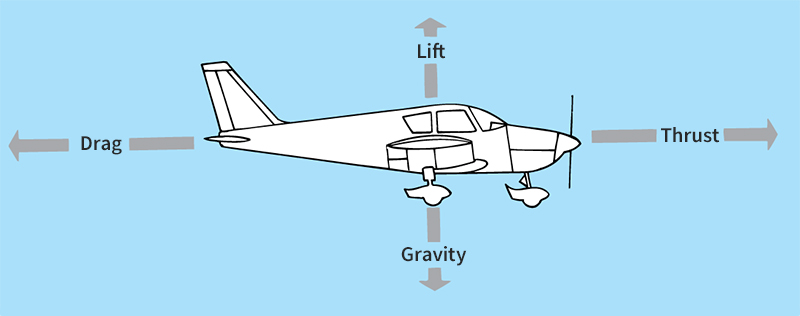
Gravity and lift are opposing forces, as are drag and thrust. When a plane’s lift equals the force of gravity and its thrust equals the drag, the plane is in level, cruising flight. When one or more of the four forces change, the plane begins to change its altitude, direction, or speed.
Gravity and lift.
Gravity tends to keep an airplane on the ground or to pull it to the earth when in flight. The force of gravity on the ground equals the weight of the plane on the ground. For a plane to take off or to climb, its wing must create a lifting force greater than the downward force of gravity. For level flight, the wing must create a lifting force equal to the force of gravity.
Lift is created by the flow of air around the airplane’s wing as the plane moves forward. Experts disagree on the best explanation of lift. According to one explanation, lift is produced by a difference in air pressure above and below the wing. As the wing moves through the air, air flows faster over its curved upper surface and slower along its bottom surface. The faster airflow reduces the air pressure above the wing. As a result, the air below the wing pushes more strongly than the air above the wing, producing lift.

Another explanation of lift is related to the wing’s ability to deflect (turn) the airflow downward. The wing deflects the airflow by guiding the air along its curved surface and by meeting the air at an angle. Deflection produces lift according to English scientist Isaac Newton’s third law of motion. This law states that, for every action, there is an equal and opposite reaction. Thus, as a wing deflects air downward, the air pushes the wing upward.
The faster a wing moves, the more lift it creates. As an airplane accelerates down the runway before take-off, the amount of lift produced by its wing increases. When the lifting force becomes greater than the force of gravity, the plane takes off.

Drag and thrust.
A wing can produce lift only if it is moving forward through the air. A plane needs thrust to create the required forward movement.
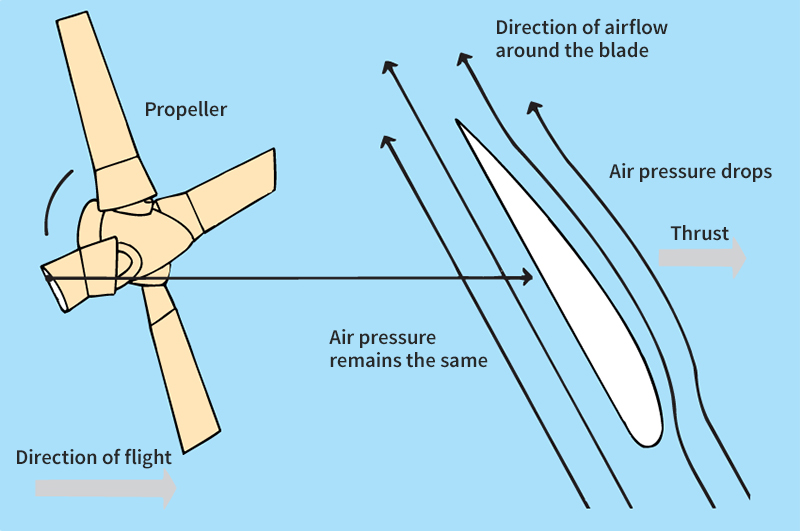
In a jet airplane, the rapid movement of gases through the jet engine produces thrust. Propellers produce thrust in turboprop planes and planes powered by reciprocating engines. Propeller blades produce thrust in much the same way that wings produce lift. As the propeller spins, the flow of air over the surface of the blades produces a force that pulls the airplane forward. The faster the jet engine works or the propeller spins, the greater the force of thrust.

To reduce drag, engineers design airplane bodies to be as streamlined as possible. They make them sleek and trim, and they design every part on the outside of the aircraft to slip through the air easily and smoothly.
Changing altitude.
An airplane cruising in level flight has lift balanced against gravity and thrust balanced against drag. To descend, the pilot may decrease engine power. The propeller or engines slow down, reducing the plane’s thrust. The reduction in thrust reduces lift, and the airplane begins to descend. At the same time, drag increases, further slowing the airplane and thus adding to the rate at which the plane descends.
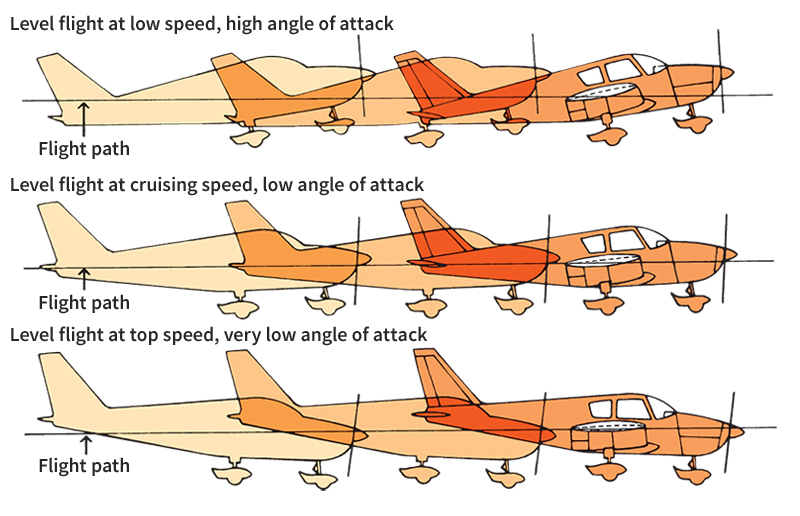
For a sustained climb, the pilot increases the engine power, creating more thrust and moving the plane faster through the air. The faster speed increases lift, and the airplane begins to climb. However, climbing adds more drag, and so the plane needs still more lift. For additional lift, the pilot increases the airplane’s angle of attack—the angle at which the wing cuts through the air. The pilot uses the controls to make the aircraft’s nose point up slightly so that the wing is at an upward angle to the path of the plane’s flight. Increasing the angle of attack alters the airflow around the wing, producing added lift.

Changing direction.
A pilot turns a plane by banking (tilting) the wing left or right. Lift always occurs at a right angle to the surface of the wing. It is the lifting force of the wing, occurring at an angle to the horizon, that makes the airplane turn. The rudder is not used to turn the plane but only to balance the turn.
When a plane makes a turn, the amount of lift opposing the force of gravity is reduced. Unless the pilot brings lift and gravity back into balance, the plane begins to lose altitude. To produce greater lift, the pilot raises the nose slightly to increase the angle of attack. In making a steep turn, a pilot increases the angle of attack and the engine power at the same time to keep the plane from losing altitude.
For more information on how an airplane flies and on how basic forces of gravity, lift, drag, and thrust act on a plane in flight, see the World Book article on Aerodynamics.
Flying an airplane
An airplane is a mechanical device that obeys mechanical laws. To become a skilled airplane pilot, a person must understand these laws and the laws of aerodynamics. The person must also have training and experience in flying an airplane.
Flying an airplane differs from driving an automobile in many ways. To make a turn in an automobile, for example, the driver simply turns the steering wheel. But to make a turn in an airplane, the pilot must operate several controls at once.
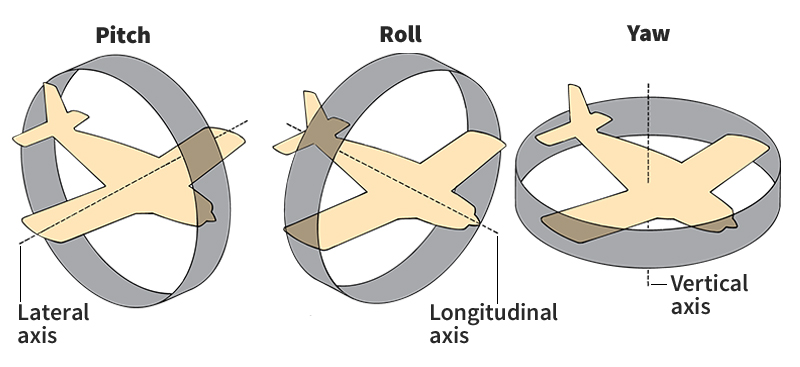
Basic movements and controls.
An airplane has three basic movements: (1) pitch, (2) roll, and (3) yaw. Pitch is the motion of a plane as its nose moves up or down. A plane rolls when it banks—that is, when one wing tip dips lower than the other. Yaw is a plane’s motion as the nose moves left or right. A pilot uses the controls to make these movements and to adjust for them.

An airplane has many controls, but four of them are basic. They are (1) the elevator, (2) the rudder, (3) the ailerons, and (4) the throttle. The elevator and rudder are parts of the tail assembly. The ailerons are on each side of the wing. A system of cables, rods, and pulleys leads from these outside flight controls to the pilot’s controls in the cockpit. The pilot’s yoke or stick controls the ailerons and elevator. The rudder pedals control the rudder. The pilot uses the throttle to control the engine speed and power.

The yoke and rudder pedals make the plane pitch, roll, or yaw. The yoke moves forward and backward and turns from side to side. Pushing the yoke forward or pulling it backward moves the elevator up or down and makes the plane pitch up or down. When the yoke is pushed forward, the elevator lowers and the nose drops. When the yoke is pulled back, the elevator moves up, forcing the nose up. Turning the yoke from side to side raises or lowers the ailerons and makes the plane roll. When the yoke is turned to the right, the right-wing aileron goes up and the left-wing aileron goes down. The plane then rolls to the right. Turning the yoke to the left makes the plane roll to the left. The pilot operates the two rudder pedals to make the plane yaw. Pushing on the left pedal swings the rudder to the left, causing the plane’s nose to swing left also. Pushing on the right pedal swings the rudder and nose to the right.


The pilot also has cockpit controls for the trim tabs on the ailerons, elevator, and rudder. The trim tabs help keep a plane balanced in spite of changes in the plane’s air speed or its center of gravity. A plane’s center of gravity changes many times in flight. For example, the center of gravity changes as the fuel in the plane’s tanks is used. To keep the plane from pitching up or down because its center of gravity is changing, the pilot would have to keep constant pressure on the yoke. But if the pilot adjusts the elevator trim tabs, they adjust the elevator to handle the change in the center of gravity and thus help keep the plane balanced.
Proper use of the controls.
To make any maneuver, an airplane pilot never uses only one basic control. To make a left turn, for example, a pilot does not simply press down on the left rudder pedal. Using only this one control would send the airplane into a left skid. An airplane in a skid does not complete its turn. It returns to its original course of flight as soon as the pilot releases the rudder pedal.
To make a left turn in level flight, a pilot must (1) turn the yoke to the left to raise the left aileron and lower the right aileron for a left bank; (2) press down on the left rudder pedal to make the plane’s nose swing to the left; and (3) pull back on the yoke to bring up the elevator and raise the nose, which increases the wing’s angle of attack. In a steep turn, the pilot might also need to push the throttle forward to increase engine power. The pilot makes all these movements at the same time, but they soon become second nature for an experienced pilot.
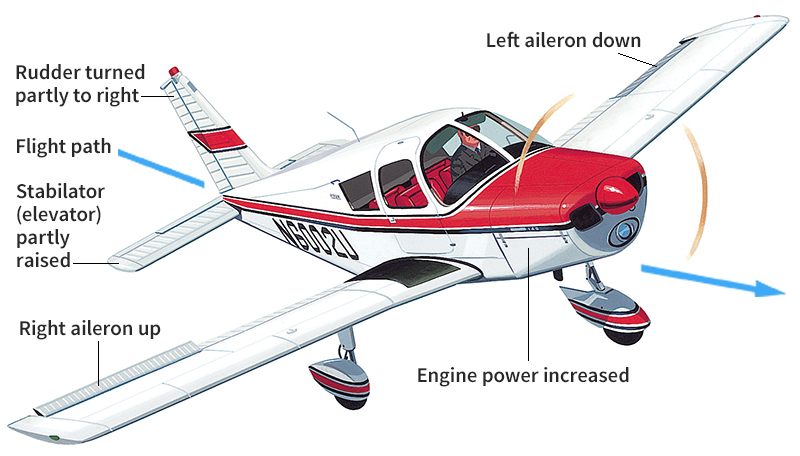
For all other airplane maneuvers—from taking off to landing—a pilot must also keep all the forces of flight in balance, just as in making a turn. By using all the basic controls at once, a pilot balances lift against gravity and thrust against drag.
Stalling
occurs when the wing’s angle of attack becomes so great that the plane loses lift and begins to fall. If a pilot brings the plane’s nose up so that the wing is at an angle of more than 15 to 20 degrees to the flight path, the air flowing over the wing will bubble wildly. As a result, the plane stalls. The pilot can bring the plane out of the stall by lowering the nose and letting gravity build up the speed needed for lift. The pilot can also increase engine power to regain flying speed.
Flying by instruments.
A pilot can maneuver a plane without being able to see anything but the plane’s instruments. This skill is necessary when flying in clouds, fog, or heavy rain. If a pilot cannot see the horizon or the ground below, it is difficult to know if the plane is on course, flying straight or turning, and losing or gaining altitude. Cockpit instruments provide this information. In addition, the instruments help pilots carry out various maneuvers without losing altitude or speed and help them land safely.
Measuring flying speed.
A plane’s speed is measured in several ways. The indicated air speed is the speed a pilot reads on an instrument called an air-speed indicator. But an air-speed indicator is affected by the changes in temperature and air pressure at different altitudes. As a result, a plane’s indicated air speed differs from its true air speed and its ground speed. True air speed is the speed of the plane in relation to the air through which it is moving. Ground speed is the speed of the plane in relation to the ground. A pilot can figure true air speed by checking the indicated air speed and the outside air temperature. Because the air is usually colder at higher altitudes, true air speed increases over indicated air speed about 2 percent for every 1,000 feet (300 meters) of altitude. For example, if a plane is flying at 10,000 feet and its air-speed indicator reads 100 mph, the plane’s true air speed will probably be about 120 mph. A pilot can use true air speed to figure the ground speed if he or she knows the direction and speed of the wind. For example, if the true air speed is 120 mph and the plane is flying into a 30-mph headwind, the ground speed will be 90 mph.
A plane’s maximum speed, also called top speed, is the fastest speed it can reach in level flight. Its best rate of climb speed is the speed at which it climbs the fastest. Cruising speed is the most suitable speed for long-distance flight. Maneuvering speed is the fastest speed at which an airplane can be flown in maneuvers or in turbulence (irregular air flow, often due to stormy weather) without endangering its structure.
Every plane also has a yellow arc speed and a red line speed, which are shown on the air-speed indicator. The area marked in yellow is a caution area. A pilot should not carry out sudden maneuvers or enter turbulence while flying at speeds in this range. The area marked in red indicates the fastest speed at which the plane can be flown under any conditions.
Every plane has a stall speed—the speed at which the wing loses lift. However, the indicated stall speed tells only the speed at which the airplane will stall in level flight. If the plane is turning, its stall speed will be higher than it is in level flight.
Learning to fly.
The Federal Aviation Administration (FAA) issues private pilot certificates to qualified United States citizens who are at least 17 years old. A private pilot certificate authorizes a person to fly a plane carrying passengers without payment for his or her services.
A person who wants to learn to fly must first get a student pilot certificate by passing a simple medical examination. Student pilots may be any age, but they must be at least 16 to fly solo (alone).
Student pilots must successfully complete a course of flight instruction consisting of a minimum of 35 to 40 hours of flying time. About half the time is spent in dual flight instruction, with an instructor accompanying the student in the plane. The rest of the time is solo practice flight, with only the student pilot in the plane. Students must complete about half their solo hours in cross-country flights outside their local airport area. Before every cross-country flight, students check the weather and plot their course. Student pilots must also pass both a written examination and a flight examination before being issued a private pilot certificate.
In Canada, Transport Canada, a department of the federal government, issues private pilot licenses to people who are at least 17 years old and who pass certain physical, written, and flight examinations. A student pilot must have a student pilot permit.
Many student pilots take ground instruction as well as flight instruction. Ground instruction includes courses in aerodynamics, meteorology (the study of the weather), navigation, and flying regulations. Students must have good knowledge of all these subjects to pass their pilot examinations. However, students are not required to take formal instruction in these subjects and may, instead, use home-study materials.
Air navigation
Air navigation is the means by which pilots determine their plane’s location in the air and direct its route of flight. Pilots use charts, compasses, radio systems, and computerized instruments to navigate accurately.
The three chief methods of air navigation are (1) pilotage, (2) dead reckoning, and (3) electronic navigation. Most pilots use a combination of all three methods. Some aircraft use inertial guidance as a navigational aid.
Pilotage,
also called piloting, is the simplest and most common method of air navigation. Using this method, a pilot keeps on course by following a series of landmarks on the ground. Before take-off, the pilot plots his or her course on an aeronautical chart, a map that shows the location of various landmarks, such as bridges, highways, railroad tracks, rivers, and towns. An aeronautical chart also shows routes for aircraft, landing fields, and radio stations that broadcast air navigation signals. The U.S. Department of Commerce publishes such charts for all parts of the United States.
As the plane flies over each landmark on the plotted course, the pilot checks it off on the chart. If the plane does not pass over a landmark, the pilot must adjust the path of flight to resume its preplanned course.
Dead reckoning
is a way of navigating when there are few or no visible landmarks. It demands more skill and experience than pilotage does. An aviator uses dead reckoning when flying over forests, deserts, large bodies of water, or heavy clouds. This method of navigation requires an aeronautical chart, an accurate clock, a compass, and a calculator for figuring time, speed, and distance. Working with the chart, the pilot plots a route in advance. The pilot also figures how long it should take to reach the destination while flying at a constant speed. The pilot adjusts the course to allow for the wind.
In the air, the pilot watches the compass to keep the plane headed in the right direction. The plane should arrive at the destination when it has flown exactly the length of time planned. Dead reckoning is not always a successful method of navigation because changing winds may drive a plane slightly off course.
Electronic navigation
involves the use of radio signals broadcast by satellites or by transmitters on the ground. Electronic devices on the airplane use the signals to determine the craft’s position or direction of travel. Almost all pilots use electronic navigation.

Satellite navigation systems
use radio signals broadcast by artificial satellites orbiting Earth. A receiver picks up signals from at least four satellites. It then calculates the plane’s location based on the distances between each satellite and the receiver.
The most widely used satellite navigation system is the Global Positioning System (GPS). Pilots of small airplanes often use affordable handheld GPS receivers to aid them in piloting. Flying in poor visibility requires a more expensive and reliable GPS unit permanently installed in the craft.
Because satellite navigation does not rely on ground stations, it can be used anywhere on Earth. Ground-based systems, on the other hand, cannot be used over the oceans or wherever else ground stations are not available. A satellite network is also cheaper to maintain than a large network of ground-based stations. As satellite navigation becomes more accurate and reliable, it continues to replace ground-based systems.
Ground-based navigation systems
still serve as an important aid to navigation in many areas. In the United States, for example, ground-based radio navigation stations guide aircraft en route and assist with navigation near airports. When pilots fly in or above the clouds, they use an IFR (Instrument Flight Rules) chart, a map of routes between radio navigation stations.
To navigate using ground-based stations, pilots first consult an aeronautical chart. The chart indicates which radio station to tune to in a particular area. The plane’s navigation equipment picks up the appropriate signal. An indicator needle shows the pilot when the plane is flying on a direct course to or from the station. It also shows when the plane drifts off course. This system of navigation, which was designed for civil (nonmilitary) aircraft, is called VOR (Very High-Frequency Omnidirectional Range). Most VOR stations also transmit signals for DME (Distance Measuring Equipment). DME tells the pilot how far the aircraft is from the VOR station. Military aircraft use a similar system called TACAN (TACtical Air Navigation). A combined civil and military system, called VORTAC, is used by both civil and military planes.
Inertial guidance
does not rely on any information from outside the vehicle. Instead, devices on board the plane measure changes in the plane’s speed and direction. The computer uses this information to calculate the position of the vehicle and to guide its flight.
Safety.
Airplane pilots follow two sets of rules when flying. When the weather enables them to see clearly, pilots usually follow Visual Flight Rules (VFR). They observe Instrument Flight Rules (IFR) when they cannot see the ground or other aircraft in the sky. However, the U.S. government requires all jet airliners to operate under Instrument Flight Rules at all times.
Pilots have various navigation aids that help them take off, fly, and land safely. In the United States, one of the most important aids is a series of air route traffic control centers operated by the federal government. In the past, each center typically used radar to make sure all the planes in its vicinity were clear of other traffic. Today, centers use Automatic Dependent Surveillance-Broadcast (ADS-B). Airplanes carry special receivers and transmitters called ADS-B In and ADS-B Out. These devices use signals from Global Positioning System (GPS) satellites to safely communicate with air traffic controllers and other airplanes.
Most large and medium-sized airports also have air traffic control towers. In the towers, air traffic controllers also now use ADS-B to direct planes that are approaching and landing or taking off and departing. Most larger airports also have an Instrument Landing System (ILS) to guide pilots to the runway in bad weather. This system uses horizontal and vertical radio beams from the ground to operate an instrument in the cockpit of an airliner. By watching this instrument, pilots can tell their exact position in relation to the runway and so can make a safe landing.
Building an airplane
In the United States, the Federal Aviation Administration makes rules for the design and manufacture of airplanes. The agency sets standards that every airplane designer and manufacturer must meet. A manufacturer may not sell a plane until the aircraft receives certification from the FAA. The certification states that the plane meets FAA standards for “design, materials, workmanship, construction, and performance.”
Some people build their own airplanes. The FAA sets different standards for home-built planes. Such a plane receives a certification that specifies (1) where and when it may fly and (2) how many passengers it may carry.
Design and testing.
Designers and engineers begin to plan and test a new airplane long before it is ready for mass production. Transports and other large planes require at least 8 to 10 years of planning. The design depends largely on how the plane is to be used. Transports must be able to carry heavy loads great distances, using as little fuel as possible. Light planes must be able to maneuver easily and to land on shorter runways. All planes must have a wing that gives great lift at low speed and little drag at high speed. The FAA requires that a wing be joined to the fuselage so firmly that it can produce lift four to six times the force of gravity on the plane. For example, if a plane weighs 2,000 pounds (910 kilograms), its wing must withstand a force of gravity of at least 8,000 pounds (3,600 kilograms).
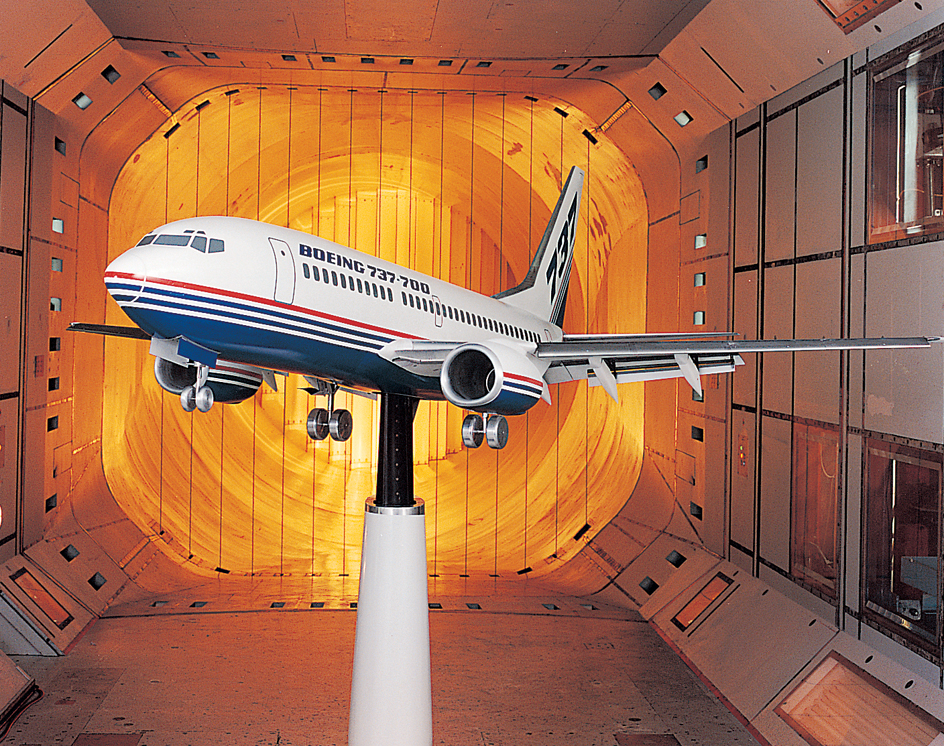
Engineers carefully test the metal, plastics, wood, and other materials to be used in a plane. All the materials must be able to withstand tremendous air pressures and extreme weather conditions. Engineers may use a structure called a wind tunnel to test the effects of air flowing over the plane at various speeds and altitudes. Today, however, many airplane designs are tested using computers instead of wind tunnels. In addition to these tests, engineers build full-sized mock-ups (models) of aircraft from wood or metal—often complete in every detail—to test the arrangement of seats and equipment.
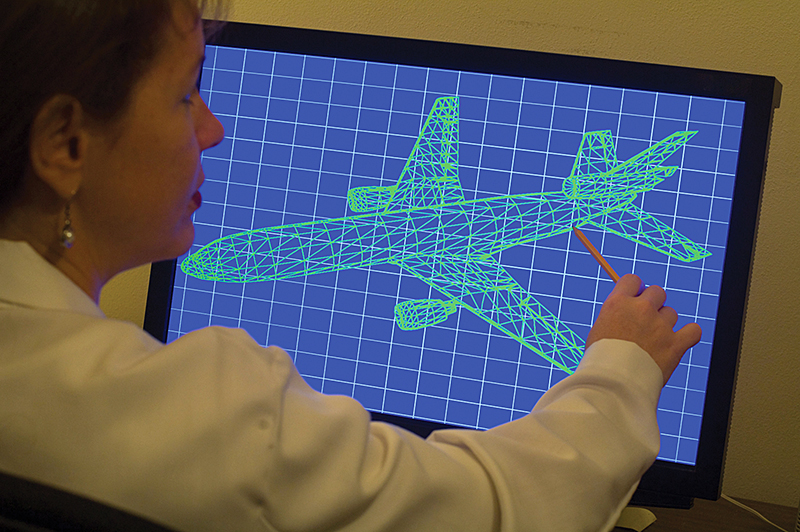
After years of planning and research, engineers build a prototype (full-sized test model) of the plane. They test it thoroughly on the ground, running the engines at high speed and taxiing the model along a runway as fast as it will go. Usually, engineers build several prototypes to discover how much wear the plane can take and to test various systems. The engine and other parts on some prototypes are tested until they fail. The manufacturer then tests an experimental plane in flight. Following these procedures, the FAA reviews every aspect of the design, construction, and testing of the aircraft, including the flight testing. If the plane meets the FAA’s strict requirements, the agency gives the manufacturer a type certificate, which allows the plane to be sold.
The Boeing 777, which entered service in 1995, was completely planned with computers. Instead of making paper drawings or building models, engineers used computers to electronically design and test the entire plane and ensure that the parts would fit together.
Mass production.
Only a few companies manufacture airplanes. But thousands of factories supply airplane manufacturers with the parts they need to assemble the planes. Some suppliers specialize in making such parts as fasteners, landing gears, or instruments. Others build the larger parts of the aircraft, including the wing, fuselage, and tail.
Airplane assembly is a complex process that takes place in many stages. The smallest parts of an airplane may be assembled by workers stationed along an assembly line, also called a production line. In the latter stages of construction, airplanes are generally too large to be moved down an assembly line. The planes remain stationary in one part of the factory, with work crews moving around to complete their assembly.
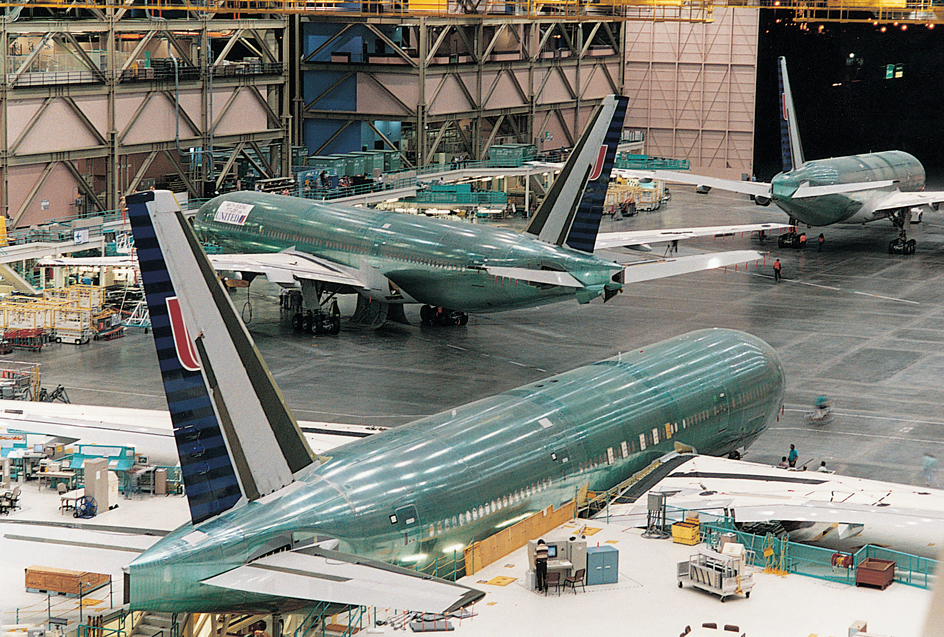
Each new plane receives a complete inspection, and a test pilot flies it to make sure the engines and controls are in perfect working order. After the plane passes these final tests, it is ready for delivery to a customer.
History
For thousands of years, people dreamed of flying. Some even tried to fly by tying feathers to their arms and flapping them like wings. But most people believed that flying was beyond the powers of ordinary human beings. They told stories of godlike people who could fly or who were carried through the air by winged animals. The ancient Greeks told a story about an inventor named Daedalus and his son Icarus, both of whom flew with wings made of feathers and wax. But Icarus flew too close to the sun. The sun’s heat melted his wings, and he fell into the sea and drowned. See Daedalus.
Early experiments and ideas.
About 400 B.C., a Greek scholar named Archytas built a wooden pigeon that moved through the air. No one knows how Archytas made his pigeon fly. He may have attached the bird to a revolving arm and used steam or compressed air to move it in a circle. The people of China may have made and flown kites as early as 1000 B.C. A kite is really a form of glider. Later, large kites lifted people into the air. 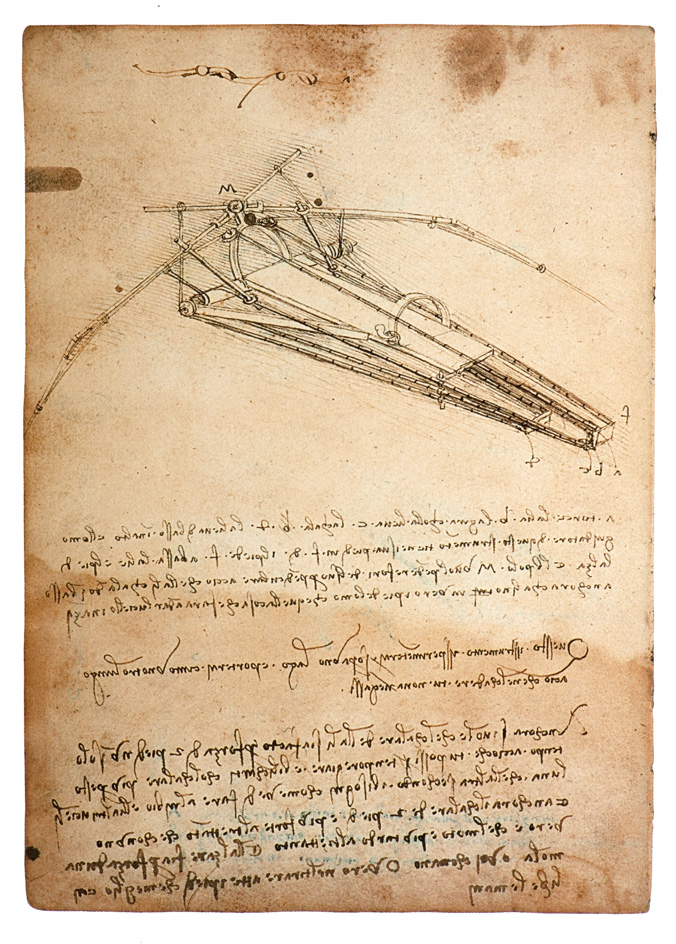
In the 200’s B.C., the Greek mathematician and inventor Archimedes first described the principle of buoyancy, which explains how objects float. For hundreds of years, people thought their bodies would float or fly in the air, too, if they equipped themselves with such devices as flowing cloaks or artificial wings. But all of their attempts failed. About A.D. 1290, an English friar named Roger Bacon wrote that air, like water, has something solid about it. Bacon had studied the ideas of Archimedes and concluded that if people could build the right kind of machine, the air would support it, as water supports a ship. About 1500, the Italian artist and inventor Leonardo da Vinci made drawings of ornithopters, flying machines with wings designed to flap like those of a bird. In 1680, Giovanni A. Borelli, an Italian mathematician, showed that people cannot fly by flapping wings. Borelli proved that people’s muscles are too weak to flap the large surfaces that would be needed to support their weight in the air.
First human flights.
In 1783, two Frenchmen—a scientist named Jean-François Pilâtre de Rozier and a nobleman, François Laurent, Marquis d’Arlandes—made the first recorded free flight in an artificially created device. They floated for over 5 miles (8 kilometers) over Paris in a large linen and paper balloon. Two French papermakers—the brothers Jacques Étienne Montgolfier and Joseph Michel Montgolfier—had made the balloon, which was filled with hot air from burning wool and straw. The hot air made it rise. Less than two weeks later, the French chemist Jacques Alexandre Charles and his assistant Marie-Noel Robert became the first people to fly in a balloon filled with hydrogen, a gas lighter than air. Both of these efforts inspired other inventors.

Early balloons were hard to handle. But inventors continued their experiments and, during the mid-1800’s, developed the airship. The airships had engines and propellers and so were easier to handle than free-floating balloons, whose course could not be controlled. See Airship; Balloon.
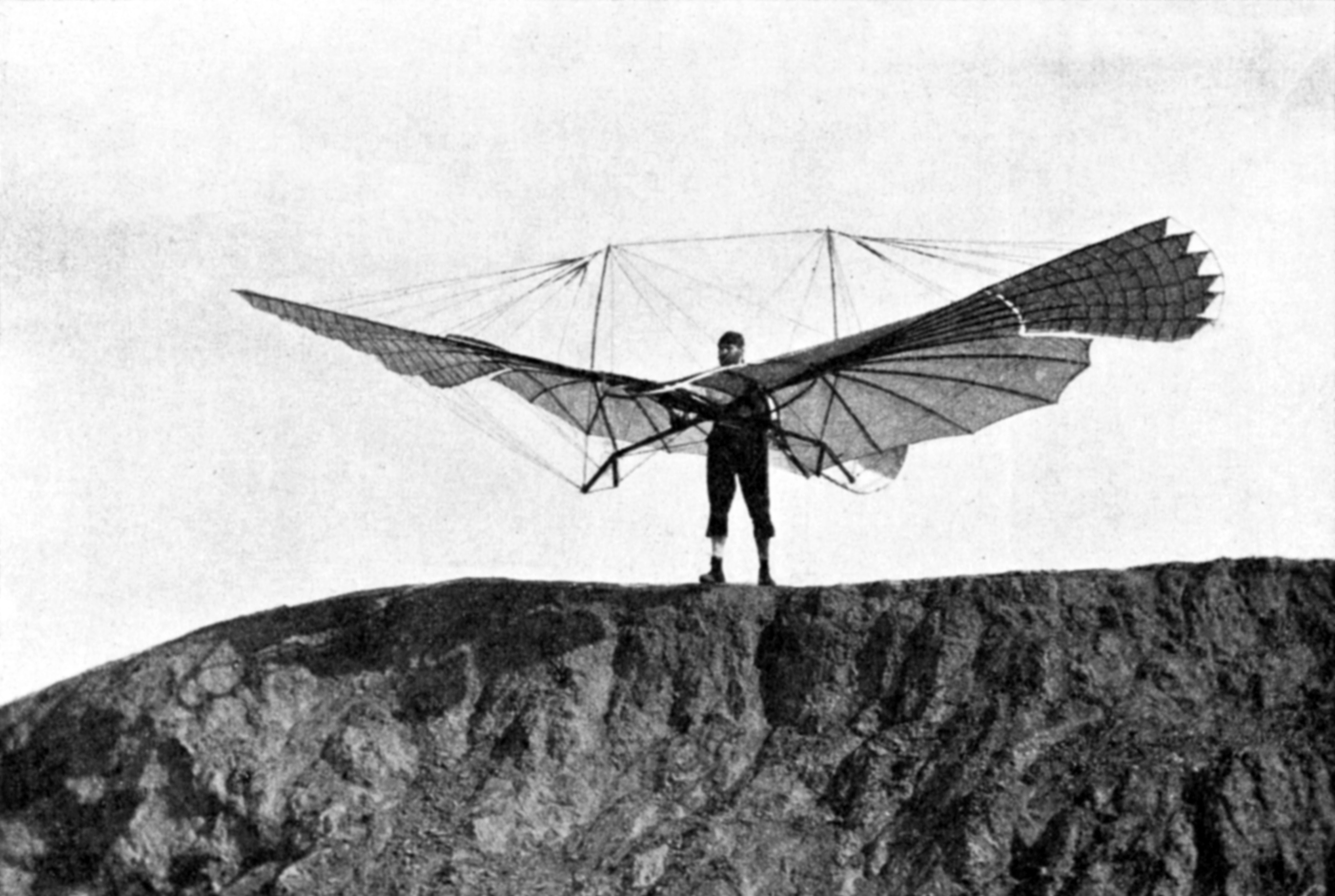
Meanwhile, other inventors had turned their attention to gliders, which are heavier-than-air aircraft without engines. In 1804, Sir George Cayley, a British inventor, built the first successful glider. It was a small craft that flew without a passenger. Cayley later built successful full-sized gliders. One of these carried his reluctant coachman across a small valley. Cayley also founded the science of aerodynamics and was probably the first person to describe a fixed-wing airplane powered by propellers.

From 1891 to 1896, Otto Lilienthal of Germany made the first successful glider flights in which a person actually piloted the glider. Before the end of the 1800’s, other inventors, including Percy Pilcher of the United Kingdom and Octave Chanute of the United States, made similar flights. Some of these early gliders were so well built that they carried their pilots hundreds of feet or meters through the air. But gliders were often hard to control. In addition, they were not designed to carry passengers or cargo and so were not a practical means of transportation.
Powered flight.
In 1843, William S. Henson, a British inventor, patented plans for the first plane with an engine, propellers, and a fixed wing. But after building one unsuccessful model, he gave up the project. In 1848, his friend John Stringfellow built a small model plane using Henson’s design. The model was successfully launched but could stay in the air only a short time. In 1890, Clement Ader, a French engineer, took off in a steam powered plane that he had built. But he could not control the plane or keep it in the air. About the same time, the inventor Hiram Maxim—an American who had become a British citizen—built a huge steam-powered flying machine. It had two wings, two engines, and two propellers. Maxim tested the plane in 1894. It lifted off the ground briefly but did not actually fly.
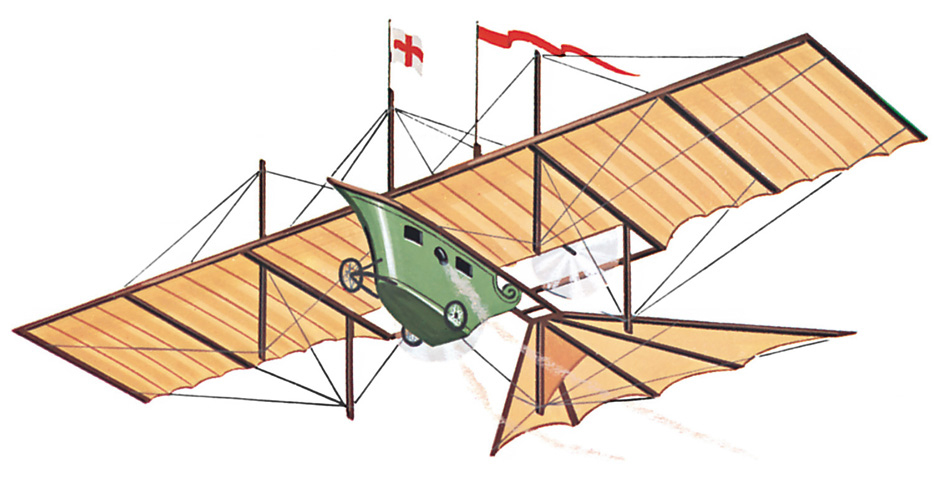
During the 1890’s, Samuel P. Langley, an American scientist, built a steam-powered model airplane. Langley called his plane an aerodrome. In 1896, it flew more than 1/2 mile (0.8 kilometer) in about 11/2 minutes. Langley then built a full-sized aerodrome powered by a gasoline engine. A pilot attempted to fly the airplane on Oct. 7 and on Dec. 8, 1903. Both times Langley’s plane was launched into the air from a houseboat on the Potomac River, and both times the airplane crashed into the water.
The Wright brothers.
During the 1890’s, Orville Wright and Wilbur Wright became interested in flying while operating their bicycle-manufacturing shop in Dayton, Ohio. The brothers read every book about flying they could find. They started building gliders in 1899. The next year, they began making glider flights near Kitty Hawk, North Carolina, an area known for its steady winds and high sand dunes. After conducting many experiments, the brothers worked out a system for controlling an aircraft in flight.
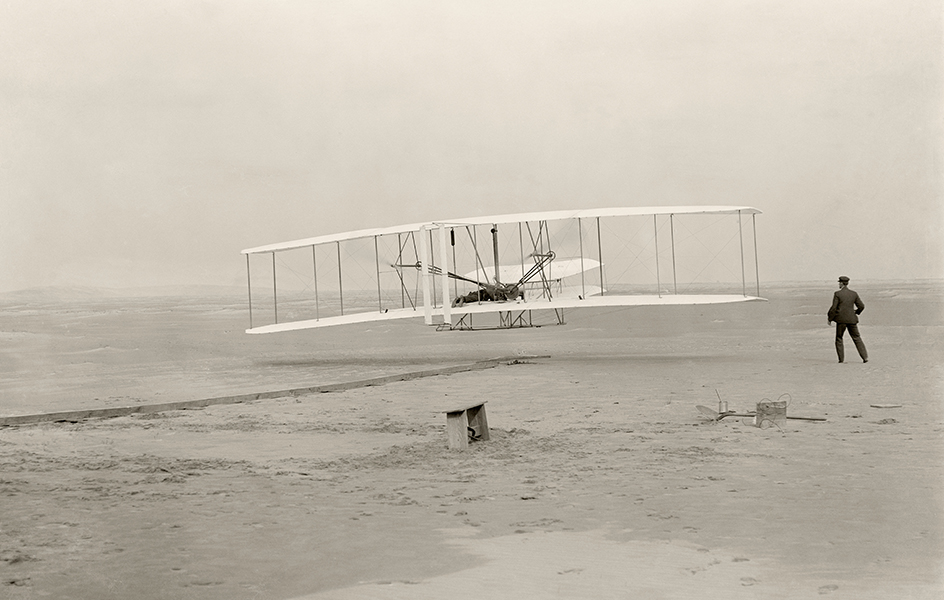
In 1903, the Wright brothers built their first airplane, named the Flyer. It was a biplane (two-wing plane) with a 12-horsepower (9-kilowatt) gasoline engine that the brothers also built. The wings, which measured 40 feet 4 inches (12.29 meters) from tip to tip, were wooden frames covered with cotton cloth. The pilot lay in the middle of the lower wing. The engine, mounted to the pilot’s right, turned two wooden propellers located behind the wings. Instead of wheels, the plane had wooden runners. Most important of all, it had the successful control system that the brothers had developed for their gliders. A main feature of this system, called a wing warp system, was a device for twisting the wing tips to preserve balance in flight. The device consisted of a wire strung from each wing tip to a “cradle” that fitted around the pilot’s hips. By moving their hips, the brothers could twist one wing tip or the other in order to maintain the plane’s balance and control while in flight.
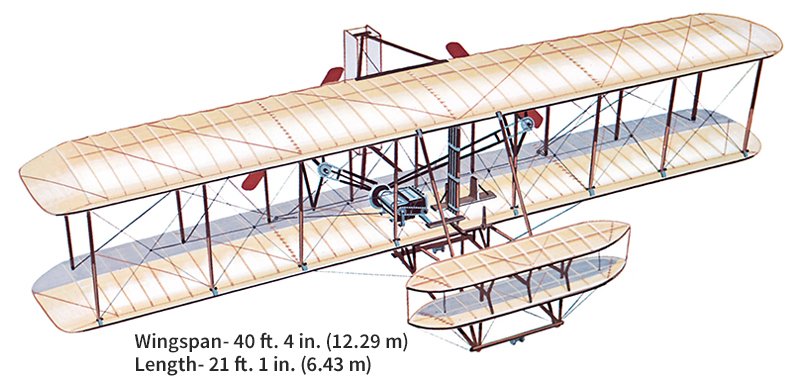
On Dec. 17, 1903, Orville Wright became the first person to successfully fly an engine-driven, heavier-than-air machine. The flight took place near Kitty Hawk. The brothers launched the plane from a 60-foot (18-meter) rail on a sand flat. The plane took off and flew 120 feet (37 meters) at about 30 mph (48 kph). The flight lasted only about 12 seconds. The Wright brothers made three more flights that day. Wilbur made the longest one—852 feet (260 meters) in 59 seconds. Loading the player...
First successful airplane flight
The Wright brothers were private about their work, and many people were skeptical of their achievement. But the men continued to improve their planes. By the end of 1905, they had built and flown the first plane that was fully maneuverable and could fly for more than a half hour at a time. But no important officials had seen the plane fly, and so the flights were not officially recognized. In 1908, Wilbur made a flight in front of thousands of people in France and amazed the world with the plane’s flying ability.
Other pioneer planes and fliers.
Alberto Santos-Dumont, a Brazilian who lived in France, became the third person to fly an airplane. In 1906, he made a few brief flights in a plane patterned after a box kite. He later built a series of planes that were among the first used for personal and pleasure flying. Also in 1906, Trajan Vuia, a Romanian inventor living in France, constructed the first full-sized monoplane (single-wing plane). It had the propeller mounted in front of the wing rather than behind. Although the plane was unsuccessful, it influenced the design of later airplanes.
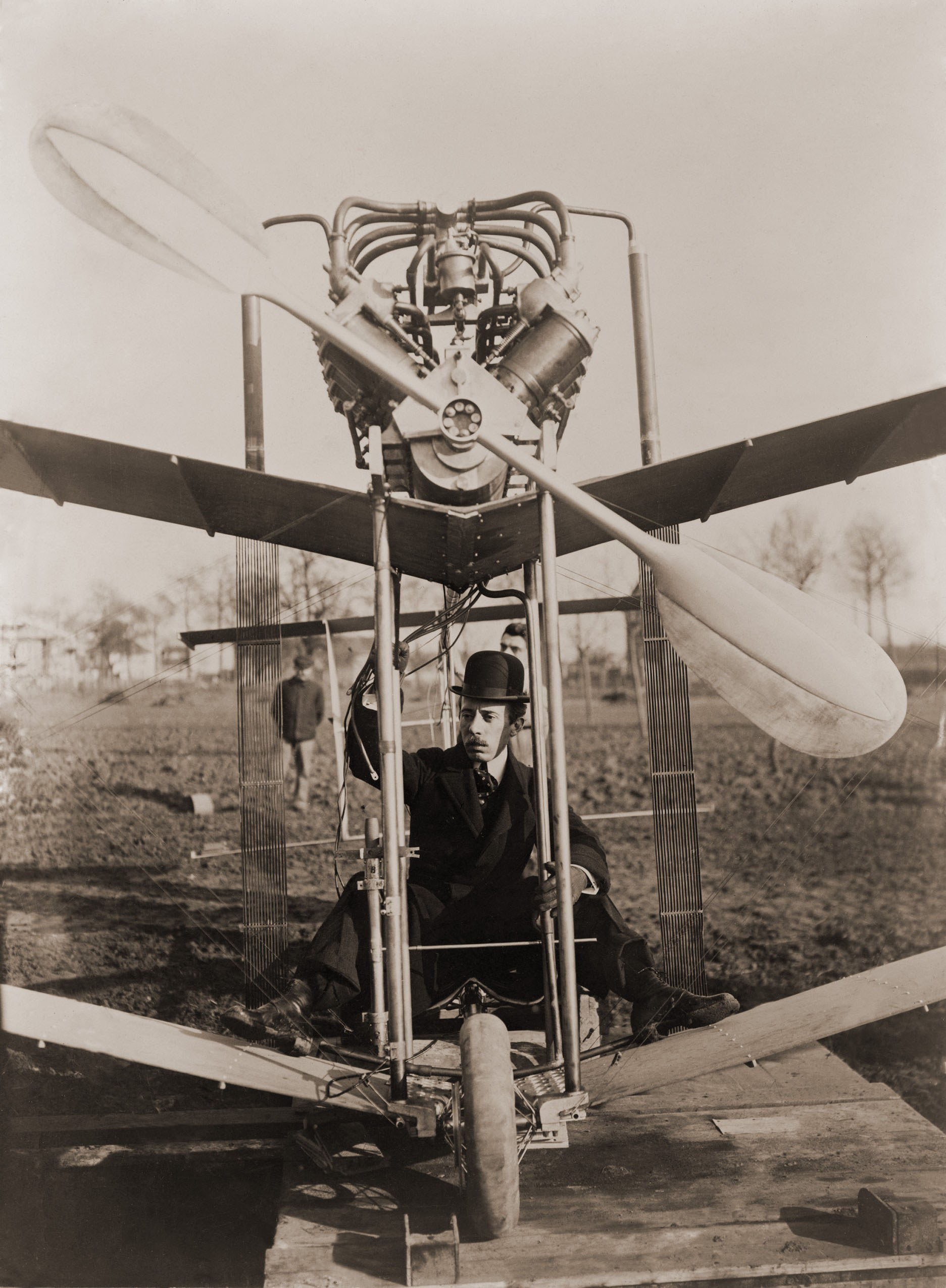

Glenn H. Curtiss, an American inventor, made the first important airplane flight in the United States after the Wright brothers. On July 4, 1908, he became the first American to make an official public flight of more than 1 kilometer (0.6 mile). He flew his biplane, the June Bug, 5,090 feet (1.55 kilometers) at 34 mph (55 kph). Henri Farman, an English flier living in France, had made a circular flight of 1 kilometer earlier in 1908. Then, on Oct. 30, 1908, Farman flew 163/4 miles (27.0 kilometers) directly across the French countryside in the first cross-country flight. The Wright brothers had made longer circular flights. Curtiss, Farman, and the Wright brothers all became successful airplane manufacturers. John A. D. McCurdy, a Canadian engineering student, made the first successful airplane flight in Canada. On Feb. 23, 1909, he flew his biplane—the Silver Dart—over 1/2 mile (0.8 kilometer) across Bras d’Or Lake in Nova Scotia.
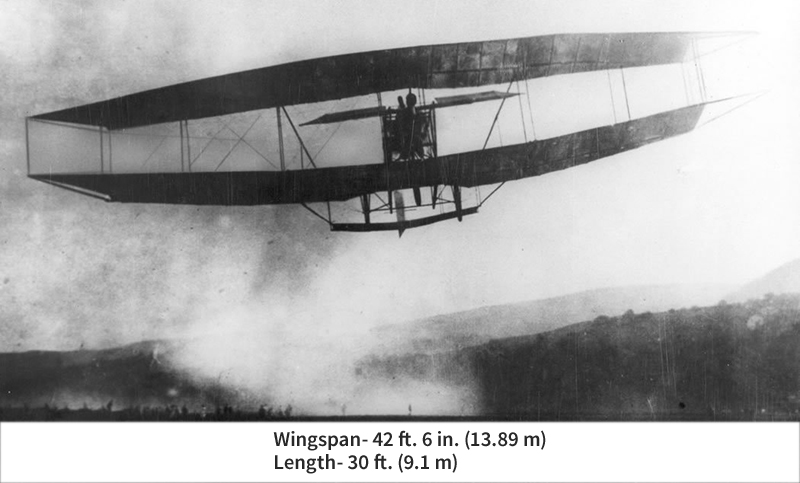
Thomas E. Selfridge, a lieutenant in the U.S. Army Signal Corps and the first officer trained to fly, was the first person killed in a plane crash. The Army had decided to test the military value of the Wright brothers’ airplane. On Sept. 17, 1908, Selfridge went up in a plane with Orville Wright. At an altitude of 75 feet (23 meters), one of the two propellers broke. The plane crashed, killing Selfridge and injuring Wright. But the Wrights were not discouraged. In 1909, they won an Army contract to build the world’s first military plane.
A French inventor, Louis Bleriot, made the first international airplane flight. In 1909, he flew his Bleriot XI monoplane 231/2 miles (37.8 kilometers) across the English Channel from France to England. The plane had a long, enclosed body, a tail for control at the rear, and a wheeled landing gear. Other successful monoplanes of the period included the Antoinette series designed by the French inventor Leon Levavasseur.

In 1911, Calbraith P. Rodgers made the first airplane flight across the United States—from Sheepshead Bay, New York, to Long Beach, California. During the 84-day journey, Rodgers landed—or crashed—his Wright airplane about 70 times. He had to replace almost every part of the plane before he reached Long Beach. His actual flying time was 3 days 10 hours 24 minutes.

In 1912, the Deperdussin Company of France built the Deperdussin monoplane racer, the first successful airplane of construction monocoque << maw naw KAWK or MON uh kohk >> . In this type of construction, the fuselage of the plane consisted of a structure strong enough to bear the stresses of flight, reducing the need for external bracing. The monocoque design produced a streamlined aircraft that was lighter and created less drag. Meanwhile, two-engine planes had been developed. In 1913, a Russian inventor, Igor I. Sikorsky, flew his Russky Vityaz (Russian Knight), also called The Grand, the first four-engine plane. Most planes still had one engine.

The early fliers and their planes participated in many air races and air circuses. These tests of flying skill did much to improve airplane design and to make flying more popular. In 1913, a French pilot, Adolphe Pegoud, became noted for his skill at air acrobatics.
World War I (1914-1918)
greatly advanced airplane development. Early in the war, both sides discovered the value of the airplane for locating enemy forces and military bases. Engineers designed more powerful engines to put swift fighter planes and heavy bombers into the skies. Germany, France, and the United Kingdom began to turn out thousands of these planes. Dogfights (air battles between fighters) became common. Seaplanes were used for taking pictures of enemy naval forces and for bombing enemy submarines. For the story of how airplanes were used in World War I, see Air Force (World War I); World War I.
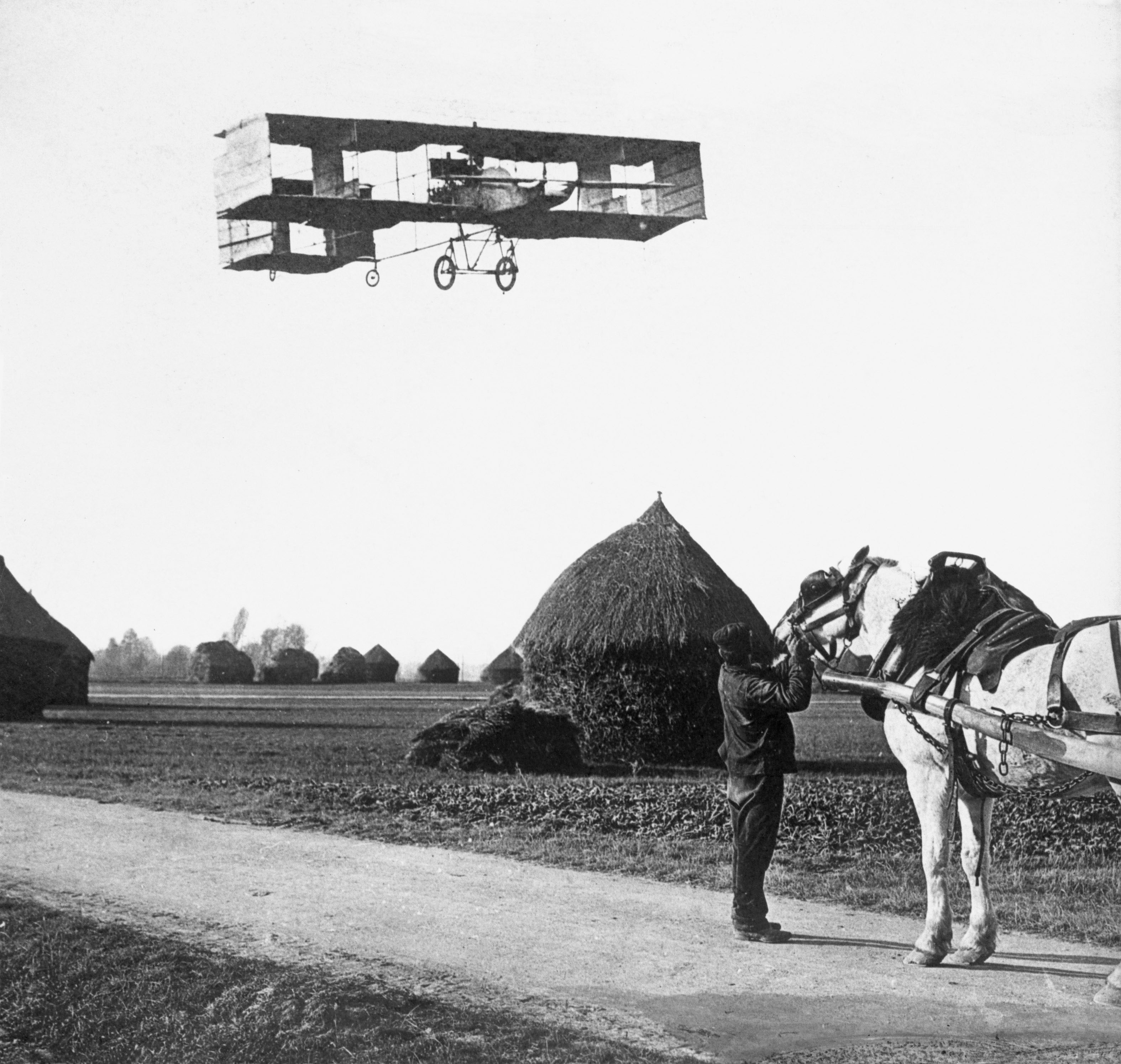
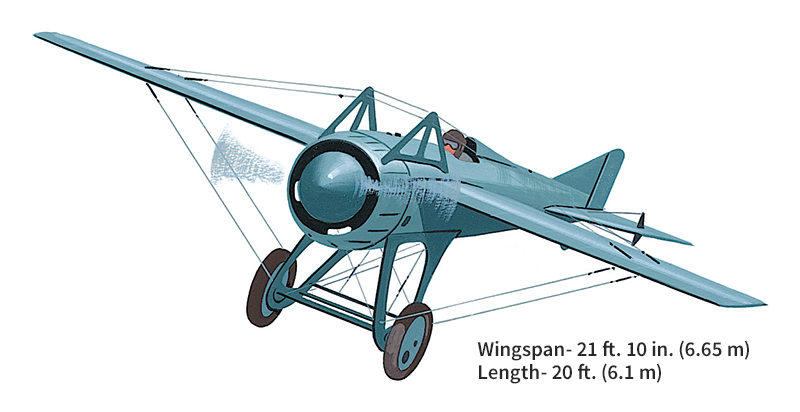
At the beginning of the war, most planes could fly 60 to 70 mph (97 to 110 kph). By the war’s end, many could go 130 mph (209 kph) or faster. Hugo Junkers, a German inventor and manufacturer, created one of the most influential airplane designs of the war. His plane, called the Junkers J 1, made its first flight in 1915. The plane was the first to be made entirely of metal and the first to have a cantilever wing, which is completely supported by an internal framework. Earlier airplane wings were supported by struts (braces) between the body and wings, which created drag and reduced the airplanes’ speed.
The golden age
in the development of the airplane occurred during the 1920’s and 1930’s. During this period, rapid advances were made in airplane design, and airlines began large-scale operations. It was also a time when daring pilots amazed the world with feats of flying skill and endurance.
In 1914, an American flier named Tony Jannus was the pilot of the world’s first scheduled airline. Jannus used a small seaplane to carry passengers and freight across Tampa Bay between St. Petersburg and Tampa, Florida. The plane had room for one passenger, who paid $5 for the 22-mile (35-kilometer) flight. The airline had financial difficulties and lasted only a few months. In 1919, small airlines began to operate in Europe. They used rebuilt World War I bombers to carry passengers and mail on short flights between European cities. The cabins of some of the planes were elegantly decorated and furnished with comfortable armchairs. But the passengers could barely make themselves heard above the roar of the engines, and the cabins were unheated.
After World War I, the U.S. government offered thousands of surplus warplanes for sale at bargain prices. Although these planes were stronger than those built before the war, they still were not always safe. They were made mostly of wood and cloth and lacked satisfactory navigation equipment. But many former military pilots bought the planes and used them for an exciting and dangerous type of flying called barnstorming. Barnstormers toured the United States in the 1920’s and put on daring air shows at county fairs and other events. The pilots flew the planes in wild acrobatics. Performers called wing walkers stepped from wing tip to wing tip in flight, or leaped from the wing of one flying plane to another. Many of the planes crashed, and a number of barnstormers were killed.
The United States Post Office, the forerunner of the U.S. Postal Service, also used modified military planes to fly mail between a few large cities. The Post Office began airmail service in 1918, operating its own planes. By 1927, the Post Office gave up operating its own planes and contracted with the airlines to carry airmail. Airmail greatly aided the growth of commercial aviation.
Meanwhile, engineers were working to design safer, more powerful transport planes. German engineers developed an all-metal, trimotor (three-engine) transport, the Junkers G 23. It flew for the first time in 1924 and was the first of a series of all-metal, trimotor planes made in Europe. The first such plane in the United States was developed from the ideas of William B. Stout, an aircraft manufacturer. Henry Ford, the automobile maker, bought Stout’s company and began producing a trimotor plane in 1926. The Ford Tri-Motor could carry 10 passengers at 100 mph (160 kph) or more. In 1927, the Lockheed Company (now Lockheed Martin Corporation) produced the Vega, a single-engine transport that carried up to six passengers. It could fly 135 mph (217 kph) and travel 500 miles (800 kilometers) or farther without refueling. The Ford Tri-Motor and the Lockheed Vega were among the most popular transport planes of the late 1920’s and early 1930’s.

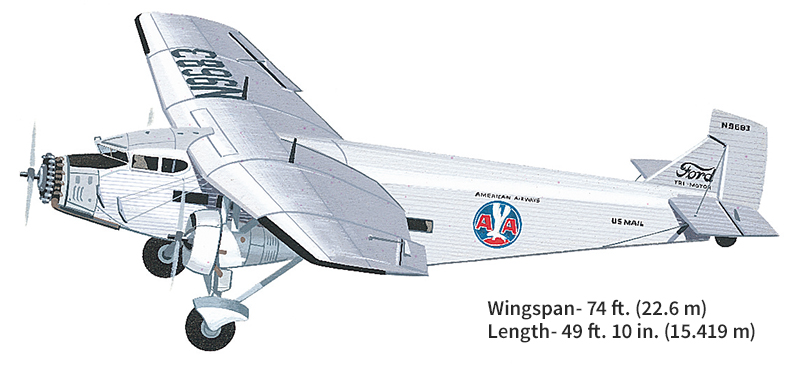
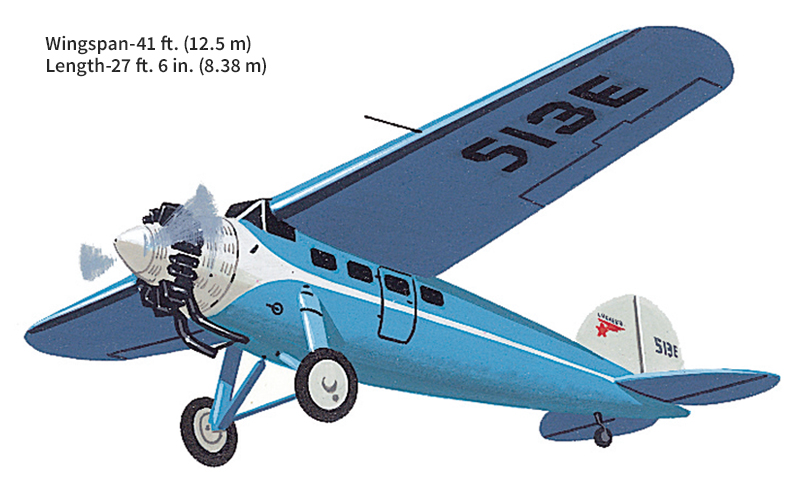
Races helped encourage improvements in airplane design during the 1920’s and 1930’s. Important races included the Pulitzer Trophy races for small planes and the Schneider Trophy races for seaplanes. In 1920, the winner of the Schneider Trophy race flew at only 107 mph (172 kph). The 1931 winner reached 340 mph (547 kph).

Fliers of the golden age.
A number of American pilots made daring long-distance flights during the 1920’s and early 1930’s. Richard E. Byrd and Floyd Bennett are credited with flying the first plane to the North Pole, in May 1926. They flew a trimotor plane designed by the Dutch engineer Anthony Fokker. Fokker had built planes in Germany during World War I but moved his plant to the Netherlands after the war. In 1929, Byrd and Bernt Balchen made the first flight over the South Pole, in a Ford Tri-Motor. In 1927, Charles A. Lindbergh made the first solo nonstop flight across the Atlantic Ocean. His 3,610-mile (5,810-kilometer) flight—from Garden City, New York, to Paris—took 331/2 hours. Lindbergh’s plane, the Spirit of St. Louis, was a specially built Ryan monoplane with a Wright engine. It was a little larger than the Wright brothers’ first airplane. It also had the most advanced aircraft instruments of the day, which helped Lindbergh find his way across the ocean without a radio.
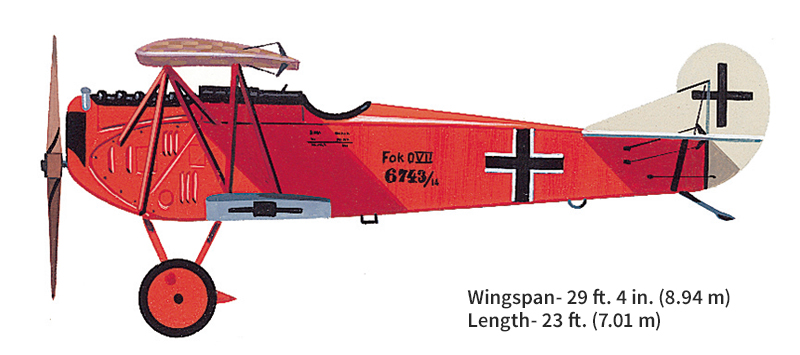
In 1931, Hugh Herndon and Clyde Pangborn made the first nonstop flight across the Pacific. The next year, Amelia Earhart, flying an improved Lockheed Vega, became the first woman to cross the Atlantic solo and nonstop. In 1933, a former parachute jumper named Wiley Post flew a Vega in the first solo round-the-world flight.
Loading the player...Amelia Earhart
Engineering improvements
during the 1930’s made it possible to build bigger planes that could fly faster, farther, and higher—and carry heavier loads. Advances in aerodynamics helped engineers streamline planes so they could cut through the air with as little drag as possible. Engineers designed controllable-pitch propellers, with which pilots could set the propeller blade at the best angle for a particular air speed or altitude. Improved radio equipment enabled pilots to receive flight directions from the ground. Automatic flight control systems also came into use during the 1930’s. These systems made possible more accurate navigation and enabled pilots to take rest breaks during long flights.
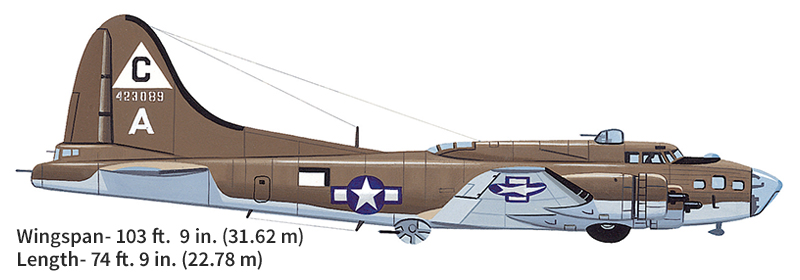
All the major advances in airplane design went into making the Douglas DC-3. This twin-engine transport made its first passenger flights in 1936. The DC-3 could carry 21 passengers and fly smoothly at 200 mph (320 kph). It soon became the most widely used airliner.
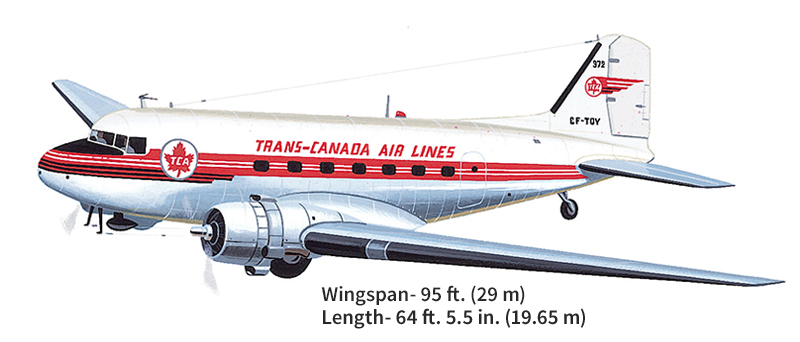
During the 1930’s, many airline passengers traveled on flying boats, large, watertight seaplanes that could float in the water like the hull of a ship. Flying boats were used mainly for flights across oceans. One of the largest commercial flying boats was an enormous 12-engine plane built in Germany—the Dornier Do-X. It flew for the first time in 1929 but never became a popular airliner. One of the last and most famous flying boats was the Boeing 314 Clipper, which could carry up to 74 passengers. In 1939, 314’s started the first regular passenger service across the Atlantic Ocean. But the development of more powerful landplanes—and of more airports with runways long enough to handle them—ended the day of the flying boats in most parts of the world.

As planes flew higher and higher, pilots and passengers had increased difficulty breathing in the thin air at high altitudes. So engineers designed pressurized cabins, in which the air inside is compressed at high altitudes to make breathing easier. Pressurized cabins became common in the late 1940’s.
During World War II (1939-1945),
the United Kingdom, Germany, Japan, the United States, and other countries turned out thousands of military planes. As in World War I, engineers made great advances in the design of bombers and fighters. Bombers developed during World War II could carry twice as heavy a load and travel nearly twice as far without refueling as prewar bombers could. Early in the war, fighter planes could reach a top speed of 300 mph (480 kph) and climb to about 30,000 feet (9,100 meters). By the end of the war, they were flying more than 400 mph (640 kph) and climbing to over 40,000 feet (12,000 meters). Jet fighters could fly even faster, though they were not used until late in the war.
In 1939, Germany made the first successful jet plane flight. The Messerschmitt Me 262 was the first jet to fly combat missions. It flew them over Europe in 1944 and 1945. This fighter could fly nearly 550 mph (885 kph). The Bell Aircraft Company (now a division of Textron Incorporated) built the first U.S. jet plane in 1942.

German scientists had experimented with rocket planes as far back as 1928. Early in World War II, they developed the prototype Messerschmitt Me 163. This rocket-powered plane could fly at over 600 mph (970 kph). German engineers used it as a model for a fighter, the Me 163 Komet, which flew missions late in the war.
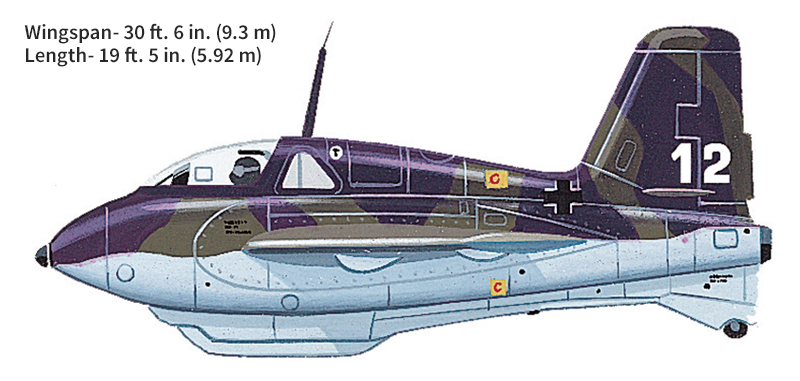
Transoceanic transports.
Near the end of World War II, manufacturers began to develop nonstop transoceanic transports for commercial airlines. Four-engine transports developed during the war, such as the pressurized Douglas DC-4 and the Lockheed Constellation, were widely used for long-distance commercial passenger service after the war. But they had to stop for refueling on the longest ocean flights. Nonstop transoceanic flights required more powerful engines. By 1945, jet engines had the necessary power, but they used so much fuel that a jet plane could fly only a short distance without refueling. Instead of waiting for improved jet engines, the airlines built more powerful reciprocating engines. Two U.S. manufacturers created reciprocating engines of more than 3,000 horsepower (2,200 kilowatts) for the new transoceanic transports. These engines were used in the Douglas DC-7, the Lockheed Super Constellation, and the Boeing 377 Stratocruiser. Each plane could carry about 100 passengers nonstop between New York City and Paris at over 300 mph (480 kph).
The jet age.
During the late 1940’s, engineers worked to improve the crude jet engines built during World War II. The Soviet Union and the United States wanted jet engines to increase the power and speed of their bombers and fighters. By the time of the Korean War (1950-1953), both countries had highly effective jet planes. These planes included two famous fighters—the U.S. Air Force F-86 Sabre and the Soviet MiG-15.
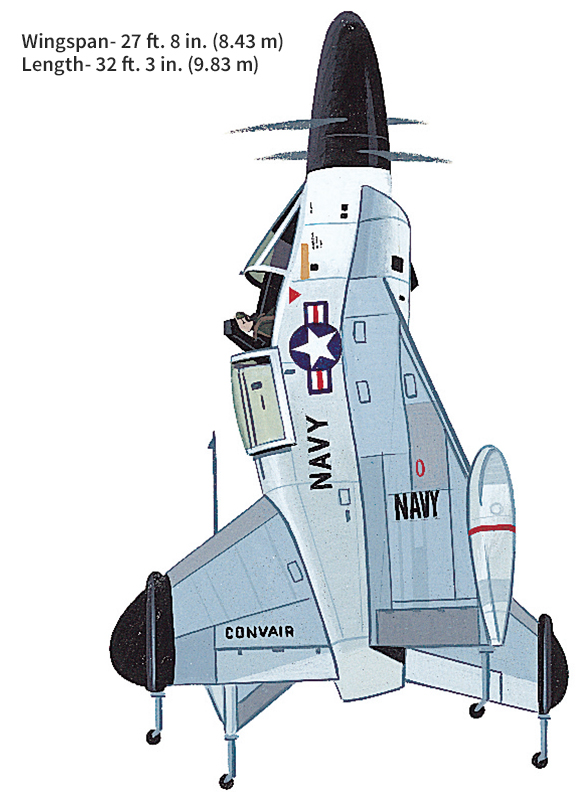
In the United Kingdom, engineers produced the world’s first large commercial jet airliner, the de Havilland Comet. Comets began passenger service in 1952. They flew at nearly 500 mph (800 kph) with little vibration or noise. The cabin was pressurized for safety and comfort. Then, in two separate accidents in January and April 1954, Comets tore apart in the air, killing everyone aboard. The fault proved to be in the plane’s metal skin, which was too weak to withstand the stress of pressurization. The disasters led to the development of fuselage designs and structures more suited to pressurization in all airliners, including new Comets. Meanwhile, the United Kingdom had also produced the Vickers Viscount, a transport plane with propellers driven by jet engines. These turboprop planes began to carry passengers in 1953.
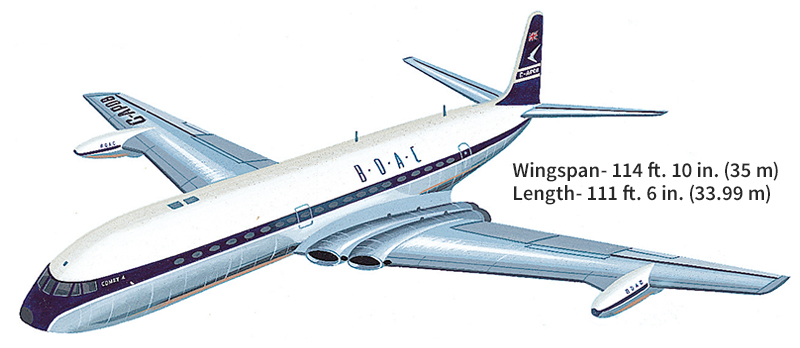

By the mid-1950’s, U.S. engineers were also designing commercial jet airliners. In 1958, the Boeing 707, a four-engine jetliner, began passenger service between the United States and Europe. By 1960, two other U.S. jet transports—the Douglas DC-8 and the Convair 880—had begun passenger service. United States manufacturers also began to design a large jet that could carry several hundred passengers or 50 to 100 short tons (45 to 90 metric tons) of cargo. The first of these giants, the Lockheed C-5A Galaxy military transport, began service in the U.S. Air Force in 1969. The world’s first commercial jumbo jet, the Boeing 747, began service in 1970. It could carry more than 400 passengers. Newer versions of the Boeing 747 could travel longer distances, flying 14 hours or more without refueling. By 2017, the Boeing 747 was phased out in the U.S., but it remained in the air fleet of a few countries. It has been replaced by the Boeing 787, also known as the Dreamliner, which entered service in 2011. The 787 is constructed with carbon-reinforced plastics that are lighter than metal, making the plane more fuel-efficient. The Dreamliner can hold 240 to 330 passengers.
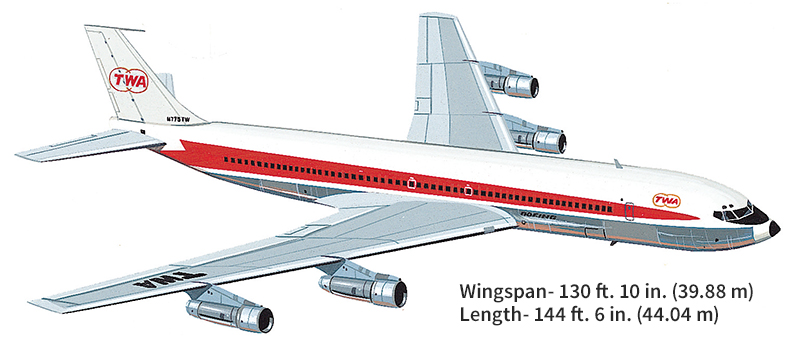

Supersonic airplanes
are among the newest developments in air transportation. These planes can fly faster than sound. At sea level, sound has a speed of about 760 mph (1,225 kph). But the speed of sound declines with altitude. At about 50,000 feet (15,250 meters), for example, sound normally travels at about 660 mph (1,060 kph). No early jet plane was powerful enough or sturdy enough to fly faster than sound. A few approached this speed. When they did, shock waves tore the planes apart.
About 1943, U.S. engineers began work on rocket research planes for supersonic flight. These planes had to withstand the terrific air pressures at Mach 1 (the speed of sound). In 1947, the Bell X-1 rocket plane, piloted by Chuck Yeager, a U.S. Air Force captain, made the first supersonic flight in history. In 1962, the North American X-15 rocket plane soared 314,750 feet (95,936 meters)—over 60 miles (96 kilometers) above the earth. Robert H. White, an Air Force major, piloted the plane. White thus became the first pilot to qualify as an astronaut by flying an airplane into space. In 1963, the X-15 raised the altitude record to 354,200 feet (107,960 meters)—about 67 miles (108 kilometers) above the earth. Later, it flew faster than Mach 6 (six times the speed of sound). Speeds of Mach 5 (five times the speed of sound) or higher are called hypersonic.

Meanwhile, engineers had developed jet engines capable of supersonic speeds. In 1953, the North American F-100 Super Sabre jet fighter became the first jet that could be operated at supersonic speeds in level flight. The first supersonic bomber was the U.S. Air Force’s Convair B-58 Hustler. It flew for the first time in 1956.
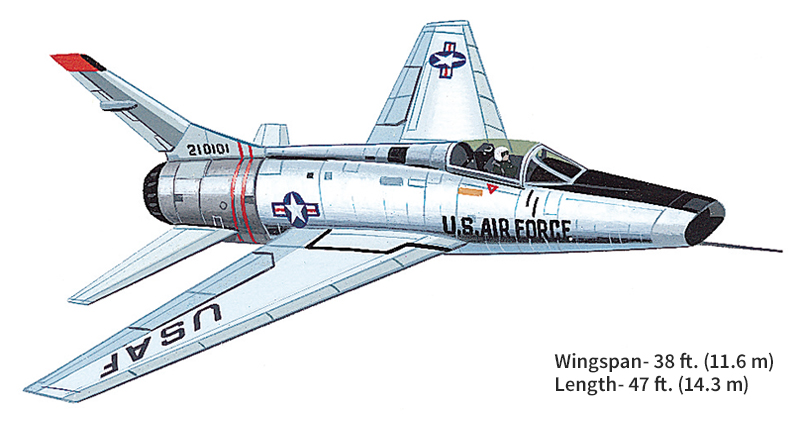
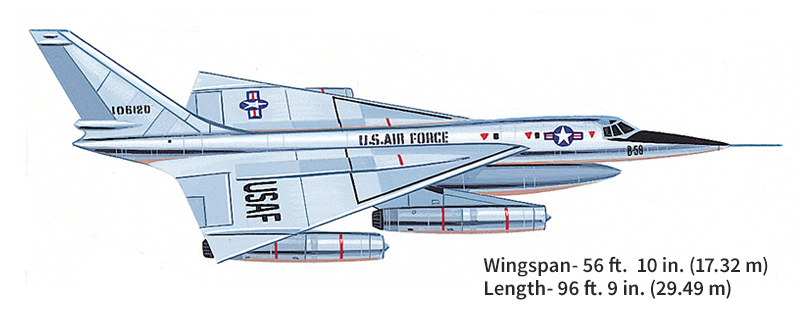
At first, all the new supersonic jets were military planes. Then in 1968, Soviet test pilots flew the world’s first supersonic transport (SST), the Tupolev Tu-144. The United Kingdom and France cooperated to build an SST, the Concorde, which made its first test flight in 1969.
The Soviet Union began cargo service with the Tupolev Tu-144 in 1975 and started passenger service in 1977. But in 1983, the Soviet Union withdrew the plane from service because of technical and operational problems. The United Kingdom and France began passenger service with the Concorde in 1976. All Concorde flights were suspended for more than a year beginning in 2000 after the crash of a Concorde in France following take-off. In 2003, the United Kingdom and France stopped all Concorde flights for economic reasons. Traveling by supersonic airliner was very expensive because the planes carried few passengers and used large amounts of fuel. The planes were also very noisy. Because of the noise, the United States and some other countries restricted the Concorde to oceanic flights only.

Future developments.
Engineers continue to search for ways to make airplanes faster, safer, quieter, and more efficient. Aerospace companies are developing designs for electric aircraft that could carry people. Electric aircraft could potentially create less pollution than fuel-burning aircraft. Spaceplanes, rocket-powered airplanes that can be launched into space, could soon be used routinely for space tourism and scientific research.
